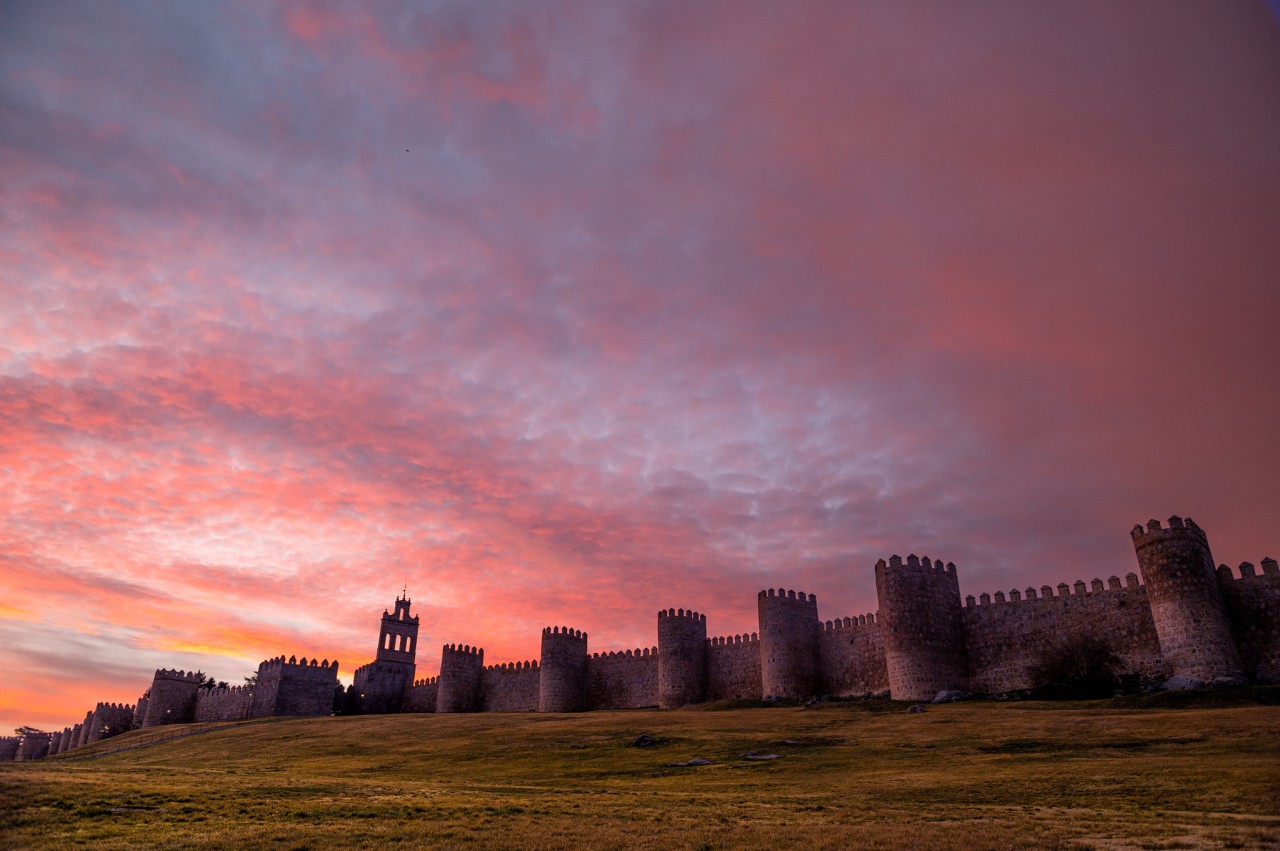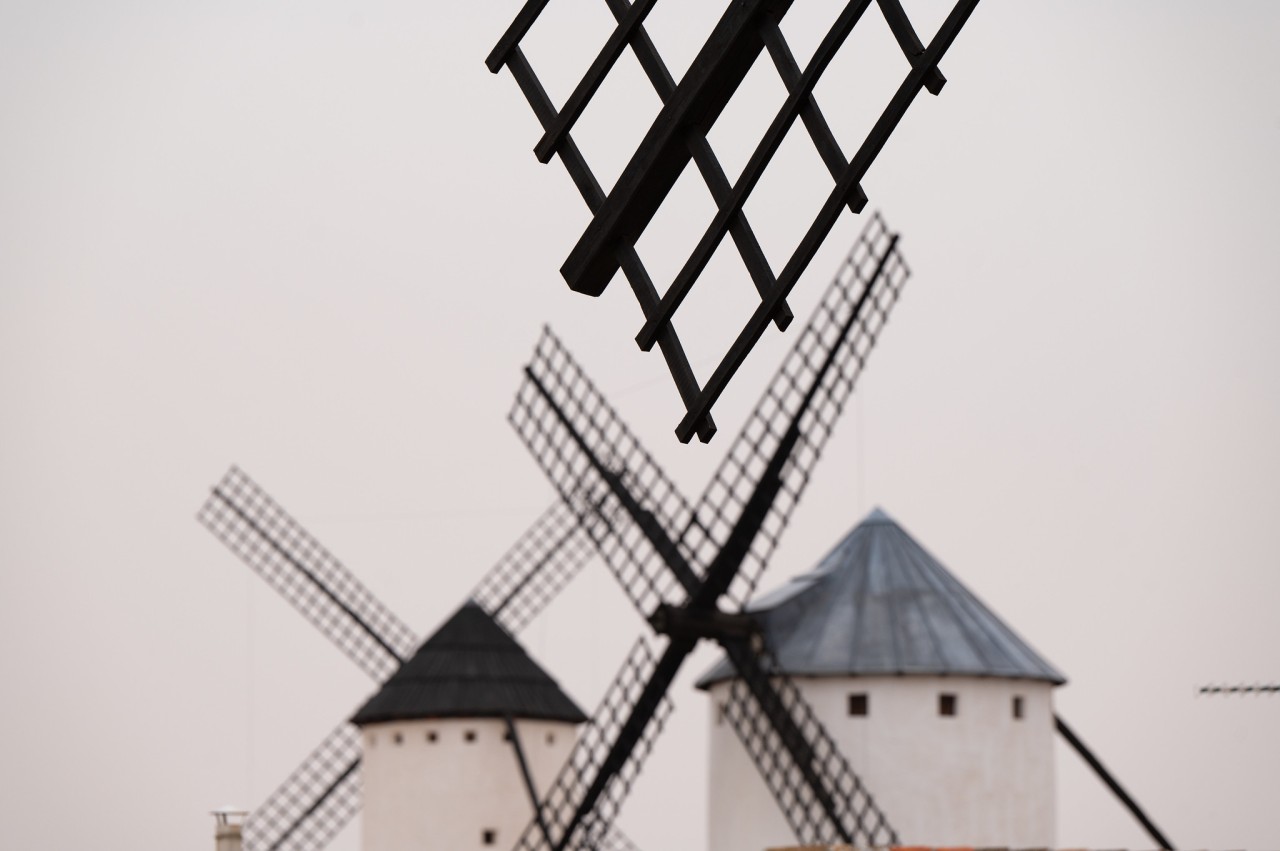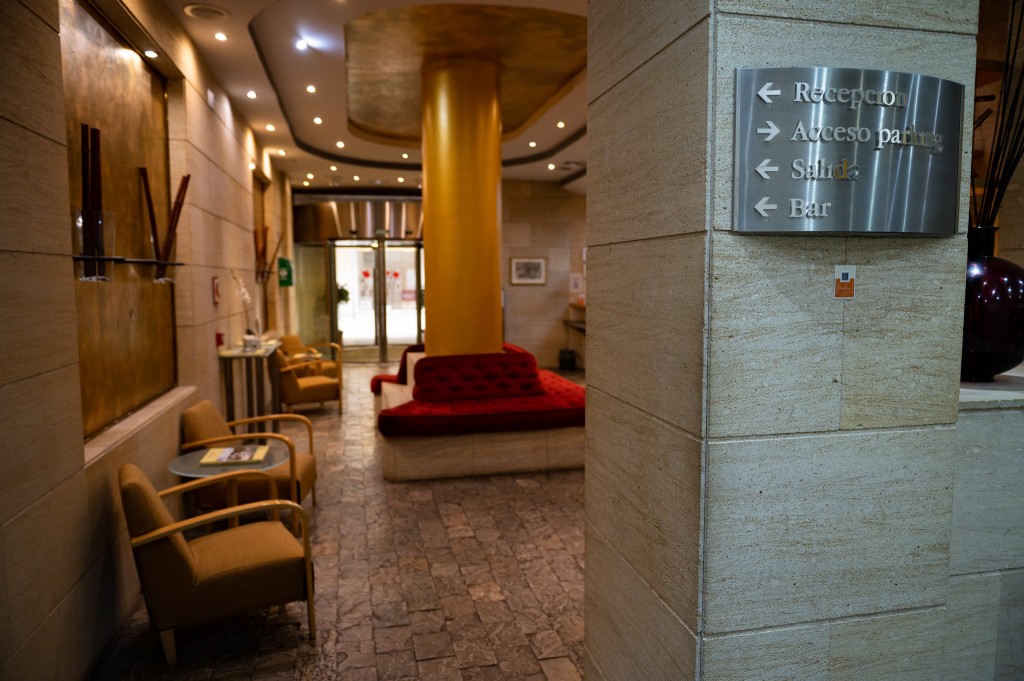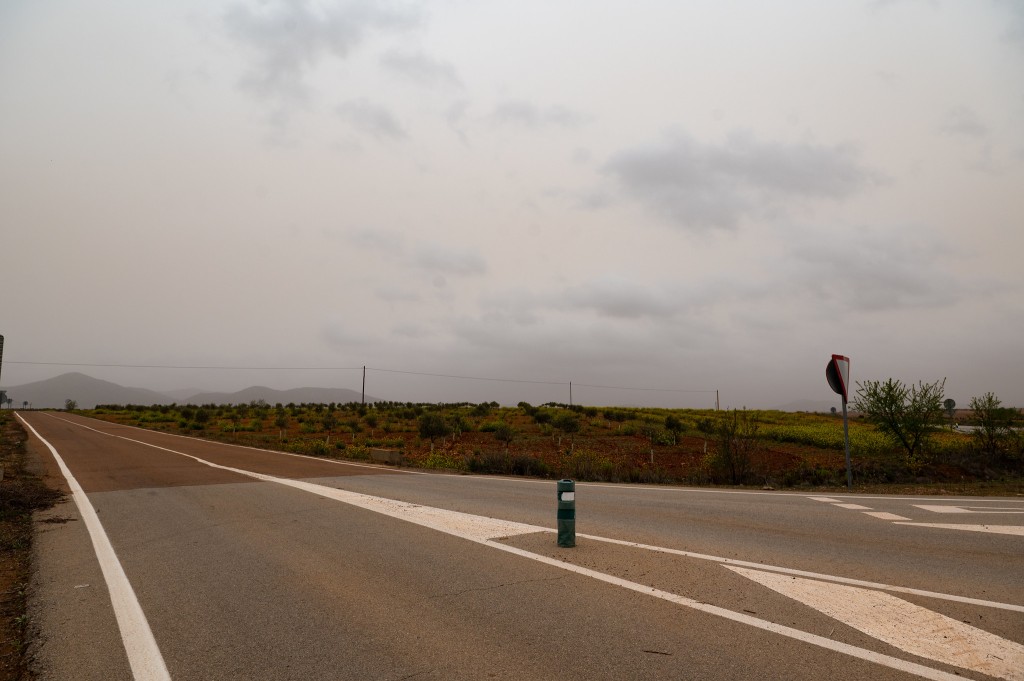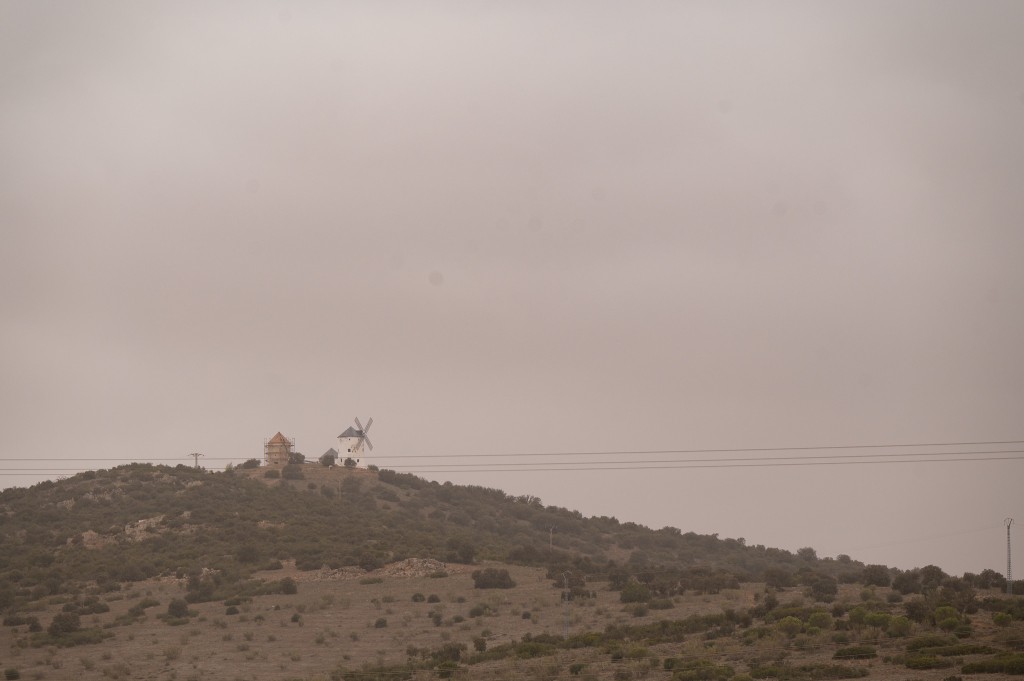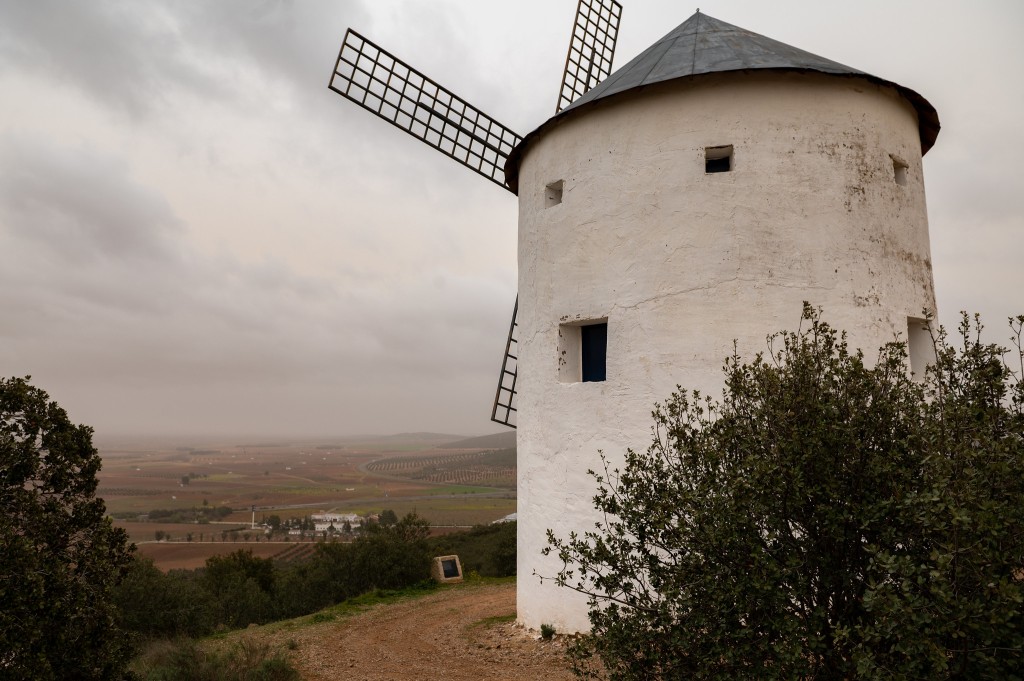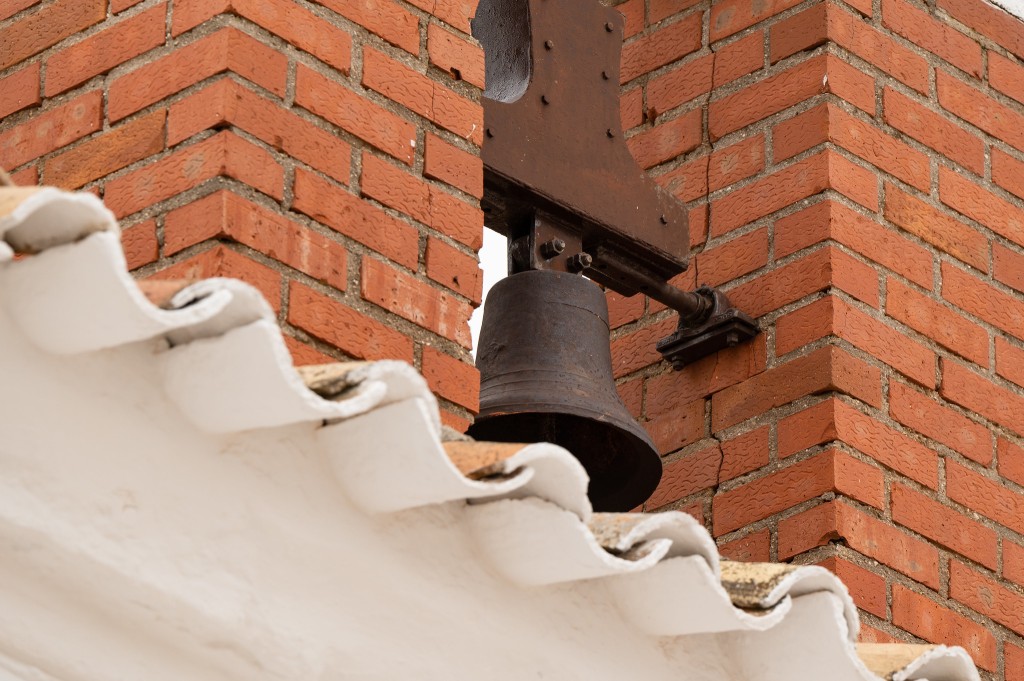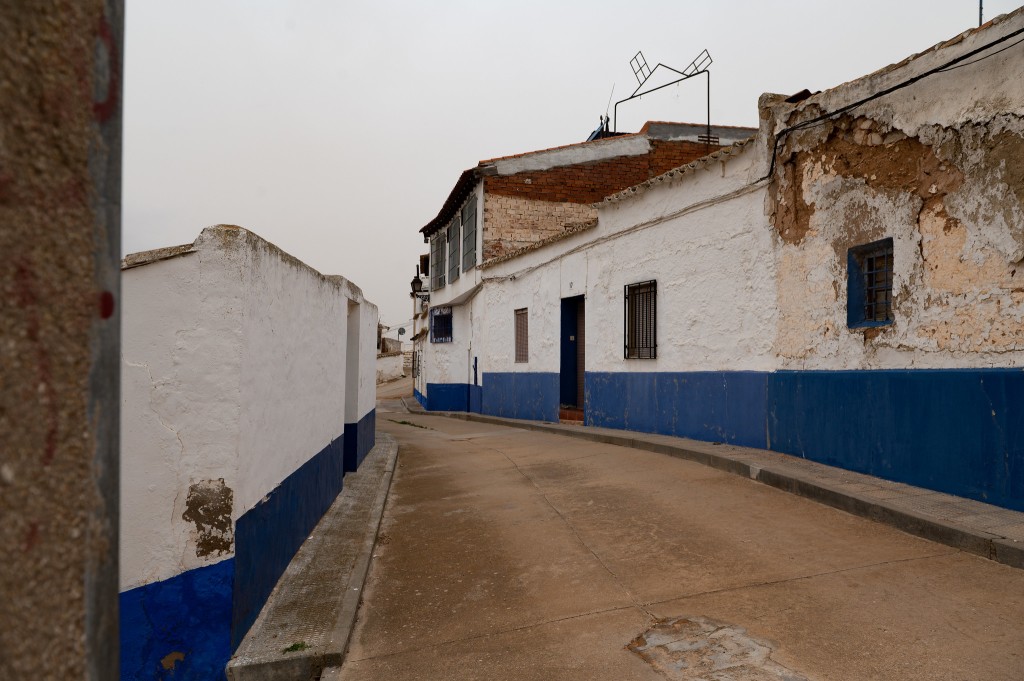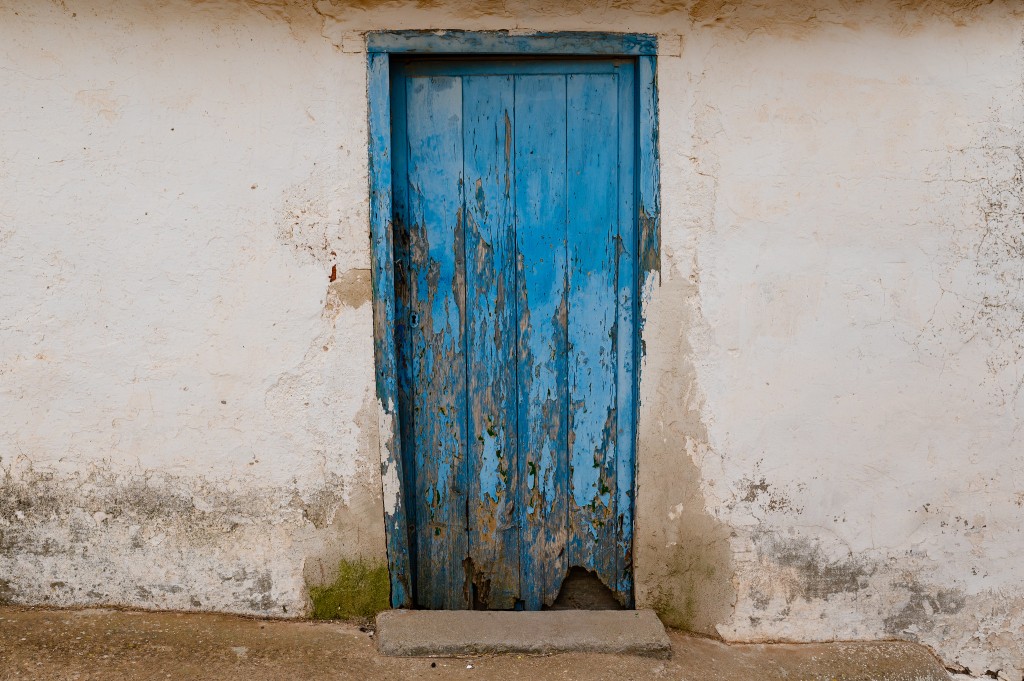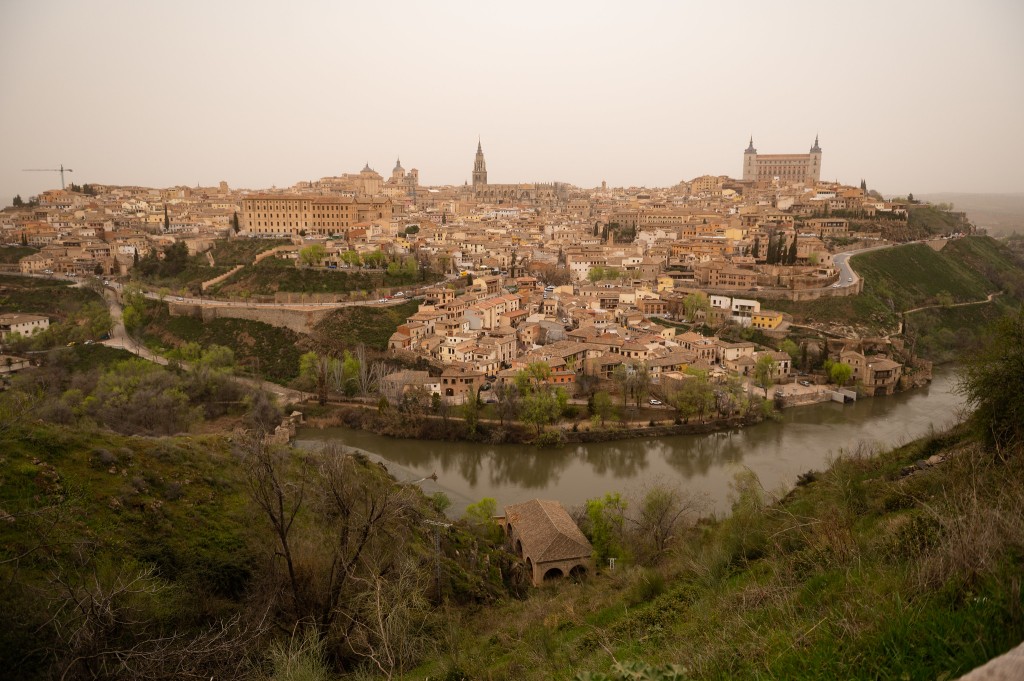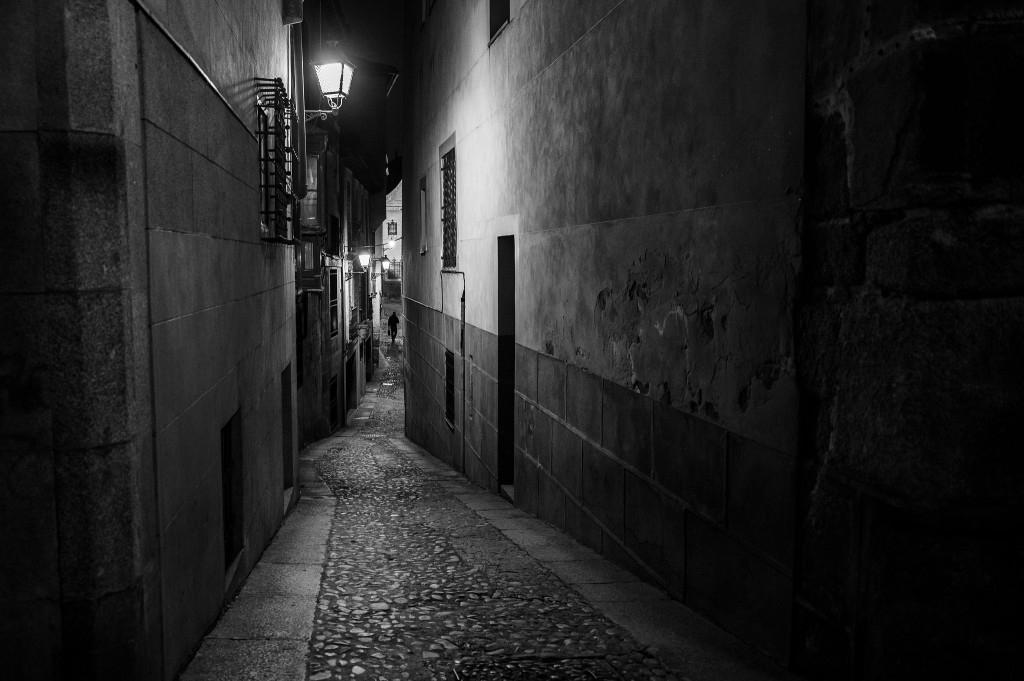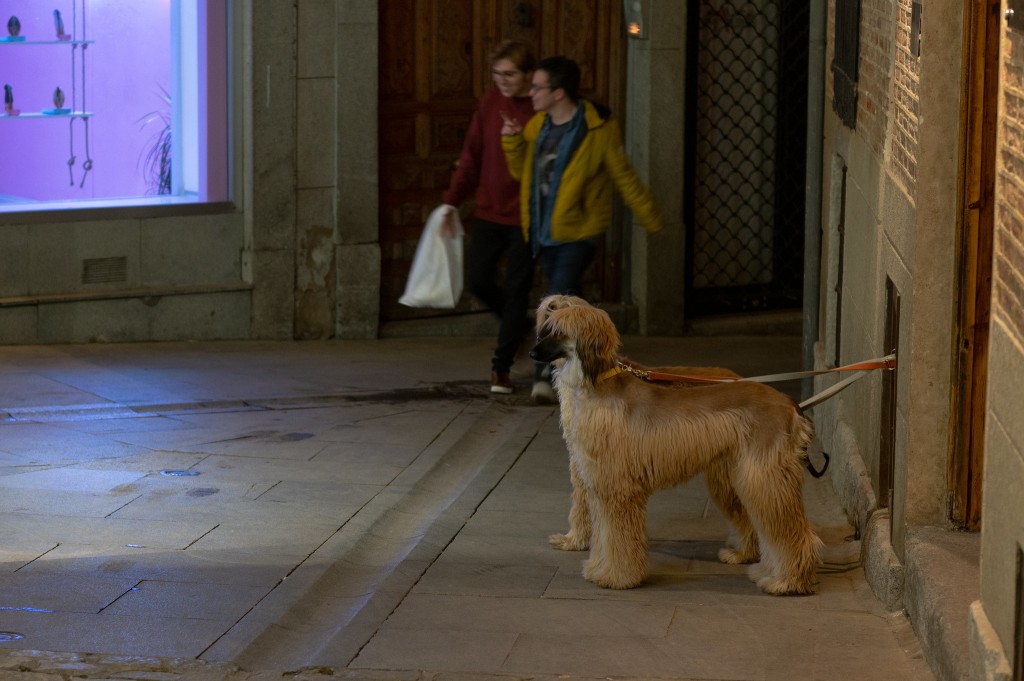The Journey Home, and a Recap; 19 March
Unfortunately, I was not able to get much sleep before I needed to leave the hotel. I had a nearly disastrous experience in 2020 in Sevilla, when I set my alarm for p.m. rather than a.m., and had to rush to make my flight; I didn’t want to repeat that, so it was difficult to relax.
I got up around 3:00. took a quick shower, checked out, and stepped onto the sidewalk in Madrid for the last time on this trip. I went to the first taxi in line outside Hotel Mediodía, a Toyota Prius, the driver loaded my bag into the rear, and we set off towards T1 of Adolfo Sáurez Madrid-Barajas. It was an easy and quick ride in the early morning hours, there was practically no traffic at all, and we arrived in just about 20 minutes. I tapped my card to pay the 30€ flat rate, retrieved my bags, and gave the driver a couple of 1€ coins.
I entered the terminal, and the check in counter for TAP was practically right in front of me, with about twenty people already in line. Just as it had been in Boston, the desk opened very late in my opinion, especially when compared with other airlines that had flights at similar times. There were a number of delays once things did get moving, as people who had paid for the “basic” fare had tried to cram as much as possible into their cabin bags. The line was held up as these travelers tried to get under the weight limit by moving things from case to case among their group, or removing clothes from their bag and wearing extra layers.
When it was my turn, I handed my passport to the agent, showed her the COVID test results and the Portuguese travel form on my phone, then one at a time put my checked bags on the scale. They were, of course, within the limit, but then she looked at my carry on bag and told me it was too big. I assured her it was not, and took it to the measuring device and placed it inside; it was just barely within the maximum size, but it meet their requirements. She begrudgingly acknowledged that it was fine, but that I may have problems in Lisboa.
With that behind me, for the moment, I headed to security, which was a breeze; for once I didn’t forget to remove something like a hat or a belt, and I was through within minutes. I had plenty of time before my flight, so I found somewhere to get one more café con leche in Spain, then found a quiet spot to sit and relax for a bit.
About twenty minutes before departure, I headed to the gate and found a spot to sit. As usual, when they began boarding it became a zoo, so I just waited until my zone was called, then got up and got in line. They had switched the type of plane, so it was slightly smaller than I had expected, but I managed to get space in an overhead bin directly over my seat.
The flight was uneventful, and I slept most of the way, waking up as we were making our approach into Lisboa. Once we landed, I found a flight information board, checked for my gate number, then went to grab a drink and find a quiet spot. I decide to find one after passport control, which I breezed through in about a minute, and found an area not far from where I needed to be, took a seat, then opened my laptop to look through some of the photos from my adventure.


When I arrived at my gate, there was a long line, with staff handing out papers to each passenger. This was the USA version of the passenger locator forms that I had completed digitally for Portugal and Spain. The tremendous waste of paper bothered me; each packet was three pages; multiplied by the 200 or so passengers meant that more than a ream of paper was used for just this flight.
Once we are able to board, I made it most of the way down the air bridge before I, and other passengers were stopped by the flight crew, telling us that our bags were too big. The argument that I had flown from Boston to Lisboa on the same type of plane, and on a smaller plane from Madrid to Lisboa without an issue fell on deaf ears; and I was forced to remove my laptop and have the bag gate checked.
The flight itself was comfortable, the food was fairly good, and I spent my time watching a couple of movies, and occasionally using the monitor to check the progress of the flight. , We ended up arriving in Boston a few minutes early, and passport control was much smoother than on previous trips, it was so quick that I ended up having to wait for my baggage to arrive on the carousel.


Once I was out of the airport, I took the bus service Concord Coach back to Portland where I took an Uber back home. I unpacked a few things, put the dirty clothes in the washer, and then took the rest of the evening off; content to reflect on this amazing trip.
The Recap
Thanks to the pandemic, this trip was more than a year in the making. While I had to wait a while to go, the amount of time that I was able to dedicate to the planning stage made for an itinerary that was efficient in its use of time as possible.
The trip was inspired by a book that I first read in high school, Iberia by James Michener. While he had much more time to complete his journey than I would, I chose to focus much of my visit to the autonomous community of Extremadura.
Day 1

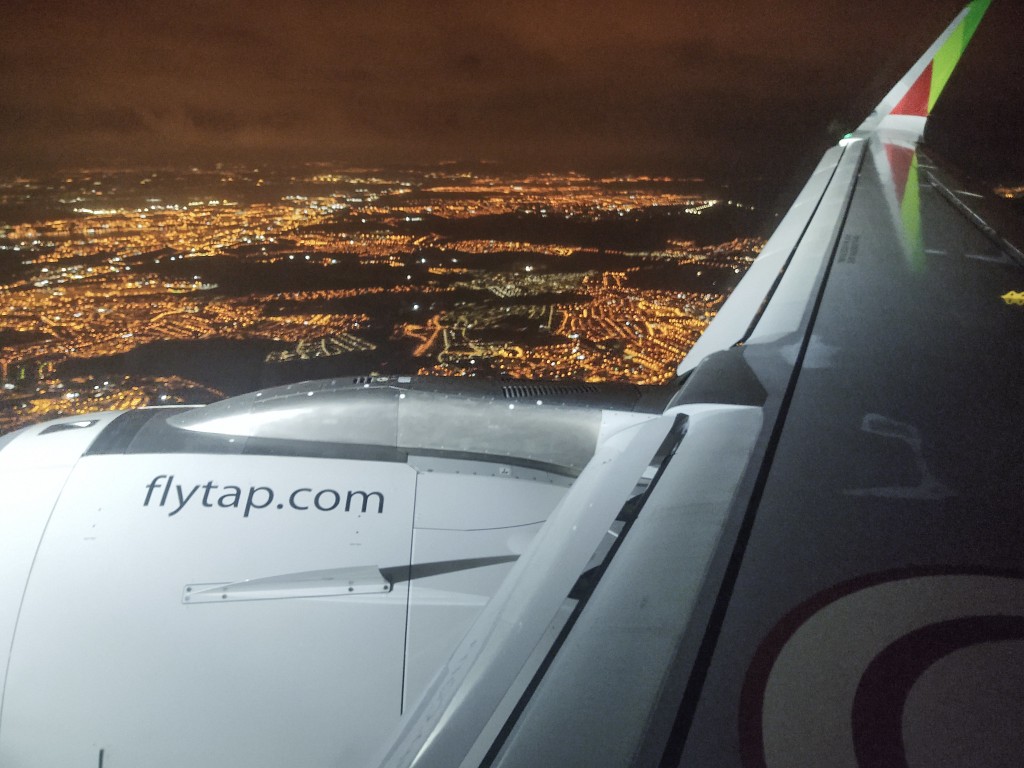

I flew from Boston to Madrid via Lisboa on TAP. The flight was comfortable, and there were no delays or issues. I had purchased a sim card from Amazon so that I’d be able to have service, and when I landed I inserted the sim card from Orange, a European service provider, into my phone, and it worked perfectly after a restart. Once in Madrid I took a taxi for 30€ to my hotel in central Madrid, across from the main train station, Puerta de Atocha. Hotel Mediodía was reasonably priced, and the room was of a good size, with excellent sound blocking windows.
I spent the rest of the day wandering the Las Huertas area, including lunch at Belisa, a cocktail bar with interesting takes on classic Spanish foods. The evening led to more wandering and taking photographs, followed by dinner at one of my favorite restaurants in Madrid, Ocafú.
Full Day 1 review is here: https://wordpress.com/post/dhillphotography.wordpress.com/271
TAP https://www.flytap.com/en-us/
Hotel Mediodía https://www.mediodiahotel.com/es/
Belisa is temporarily closed while they look for a new location https://www.belisa.es/
Ocafú http://www.ocafu.com/
Day 2


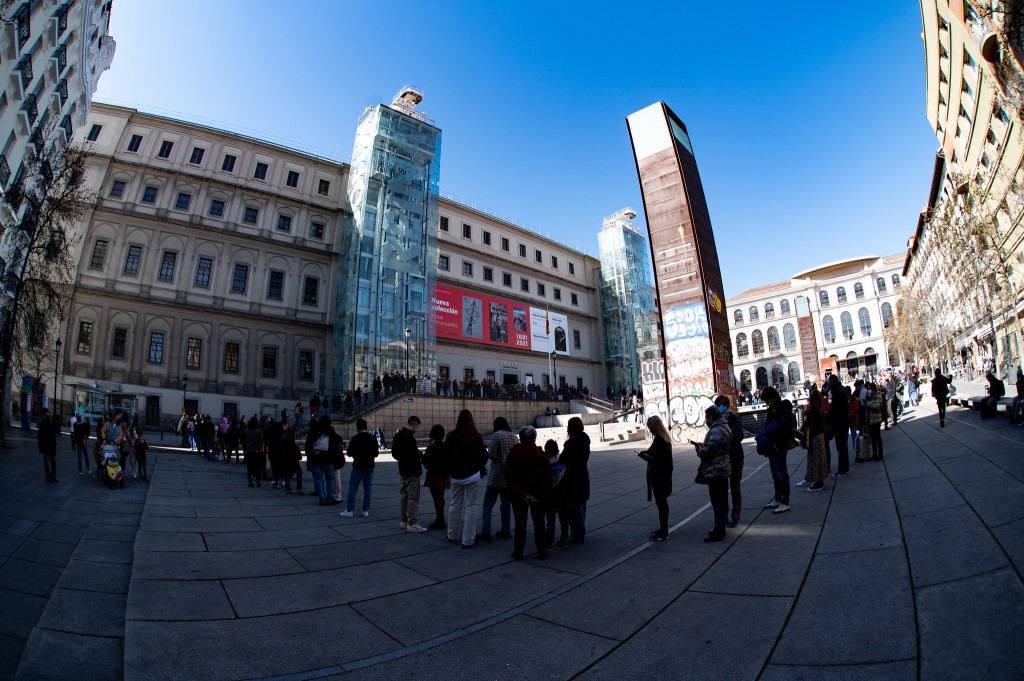
I began my second day early with a walk and photo expedition in El Parque del Buen Retiro before having breakfast at Plenti. That was followed by a visit to Museo Nacional Centro de Arte Reina Sofia. The 12€ admission is well worth it to see modern masters like Picasso and Dalí. After the museum I had lunch at Taberna el Sur de Huertas before visiting Palacio Real and Catedral de la Almundena on the west side of the city. I recommend buying tickets for Palacio Real ahead of time.
I followed that with some shopping for a new hat, and alpargatas in the area in and around Plaza Mayor. Dinner that evening was back in Las Huertas at La Malontina. I do a lot of walking in Madrid, but the Metro is an inexpensive, fast, and convenient way to get places as well. The 10 trip Tarjeta Multi is the best way to go.



Full Day 2 review is here: https://wordpress.com/post/dhillphotography.wordpress.com/308
Parque del Buen Retiro https://www.esmadrid.com/informacion-turistica/parque-del-retiro
Plenti https://www.plentimadrid.es/es/
Museo Nacional Centro de Arte Reina Sofia https://www.museoreinasofia.es/
Taberna del Sur de Huertas https://www.facebook.com/Elsurdehuertas
Palacio Real https://www.patrimonionacional.es/en/visita/royal-palace-madrid
Catedral de la Almudena https://catedraldelaalmudena.es/
Casa Hernanz https://casahernanz.es/
La Malontina https://lamalontina.es/
Metro de Madrid https://www.metromadrid.es/es
Day 3

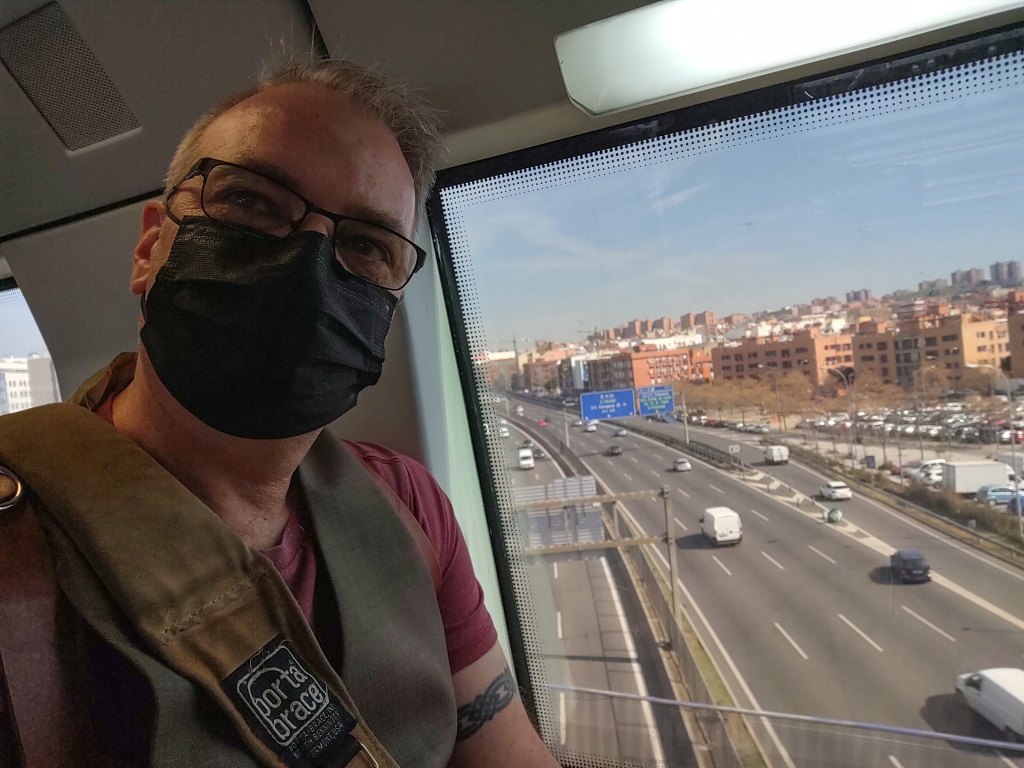

This day also began with breakfast at Plenti before I took the Metro back to Catedral de la Almudena, so that I could visit their museum, and enjoy the views from the rooftop. I then headed back to Puerta de Atocha to catch the Cercanías commuter train to nearby Alcalá de Henares. After looking around, I had lunch at Astures, just off of Plaza de Cervantes. That was followed by more photos and a visit to Museo Natal de Cervantes, the birthplace of the famous author of Don Quijote.
I took the Cercanías back towards Madrid, but stopped along the way to climb Cerro de Almodóvar, which has excellent distant views of the city. Once I was back in Madrid, I went to the Chueca area and had a small dinner at Taberna de Ángel Sierra before walking to Gran Vía and taking the Metro back to the hotel.
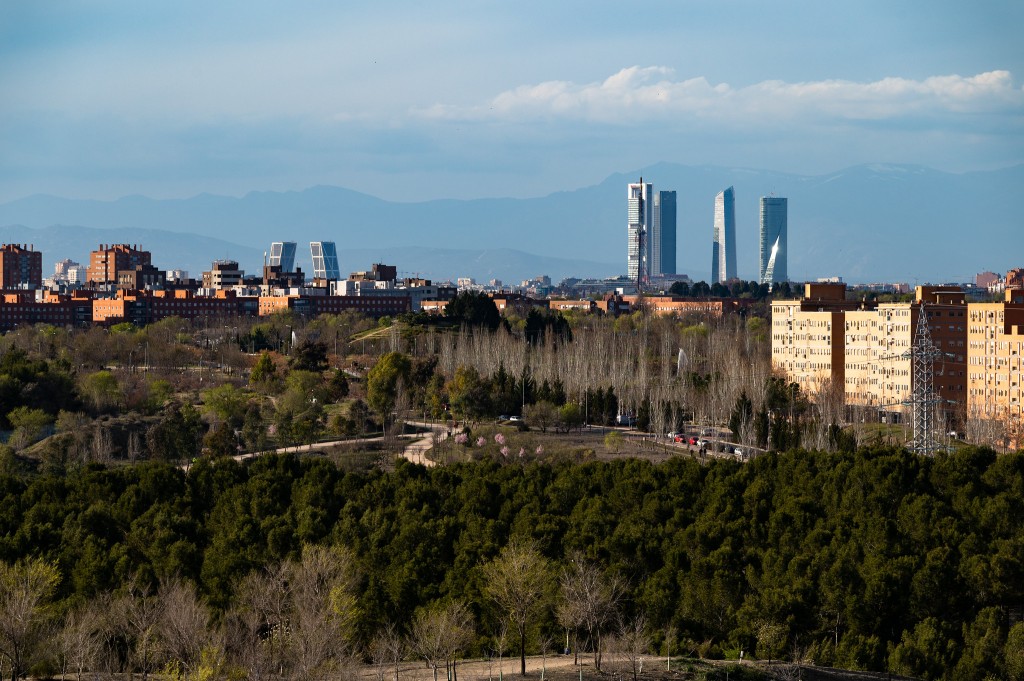


Full Day 3 review is here: https://wordpress.com/post/dhillphotography.wordpress.com/361
Cercanías https://www.renfe.com/es/es/cercanias/cercanias-madrid
Astures no website. Calle Bustamante de la Cámara, 3
Museo Natal de Cervantes https://museocasanataldecervantes.org/
Cerro de Almodóvar http://info.igme.es/ielig/LIGInfo.aspx?codigo=TM023
Taberna de Ángel Sierra https://tabernadeangelsierra.es/
Day 4

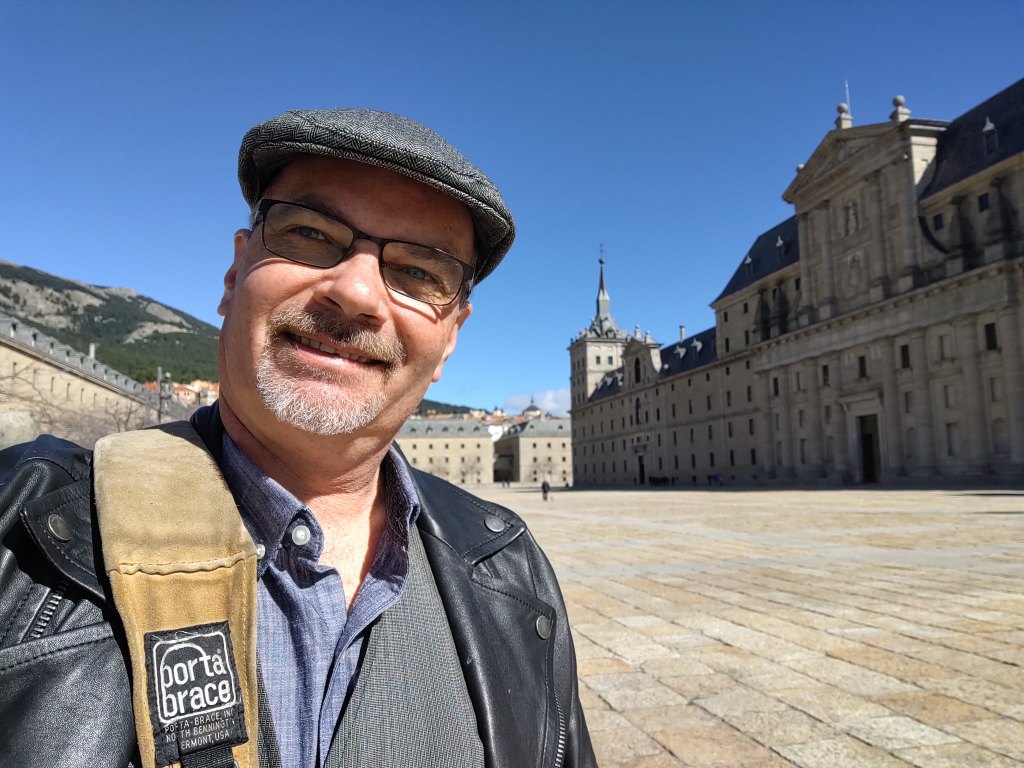

The road trip would begin on this day. I picked up my rental, a Puegeot 3008, from Enterprise at Puerta de Atocha. I drove first to San Lorenzo de El Escorial to visit the monastery there, which is immense. If you visit, give yourself a few hours here, at least. I had lunch at La Taberna del Viajero before continuing on to Ávila.
Once in Ávila, I checked into my hotel, Palacio de Los Velada, which is a beautiful property located in a palace.I spent time walking the walled city before heading to a location outside of the walls to capture the sunset. That night´s dinner was at Alvalacan, just outside the wall near my hotel.
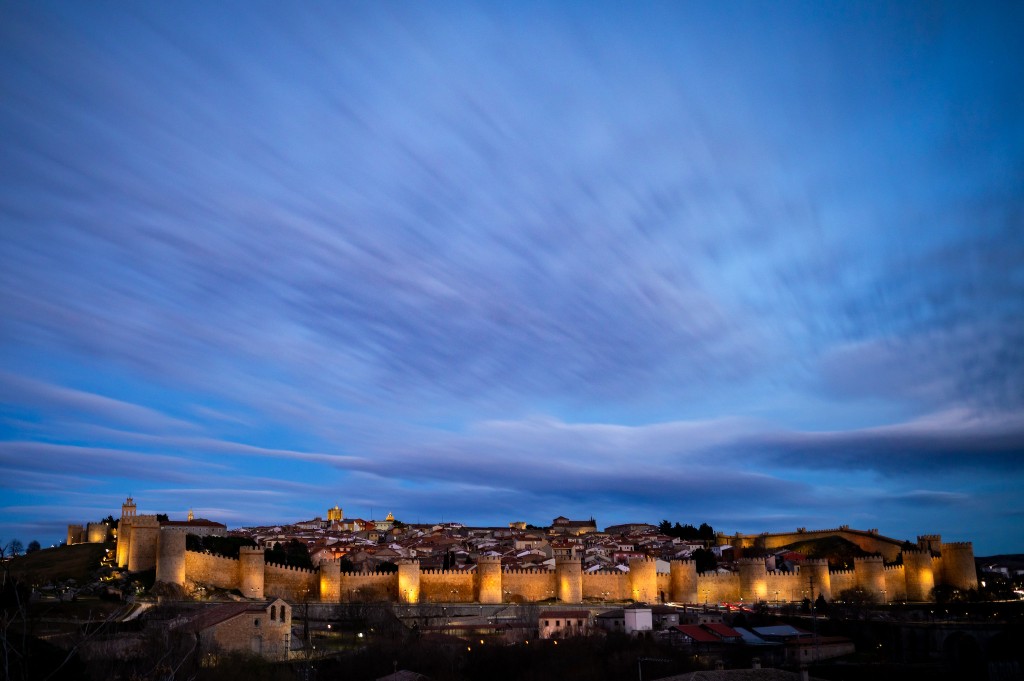


Full Day 4 review is here: https://wordpress.com/post/dhillphotography.wordpress.com/432
Route from Madrid to San Lorenzo de El Escorial https://goo.gl/maps/e91LTCYPWHkJELTc9
Route from San Lorenzo de El Escorial to Ávila https://goo.gl/maps/g6KD6NX5omfMH7Uh7
Enterprise https://www.enterprise.com/en/home.html
El Escorial https://tickets.patrimonionacional.es/es-ES/informacion-recinto/1/san-lorenzo-del-escorial
Taberna del Viajero https://es-es.facebook.com/people/La-Taberna-del-Viajero/100063536353407/
Palacio de Los Velada https://www.hotelpalaciodelosvelada.com/
Alvalacan no website. Calle de San Segundo, 38
Day 5



I would have a whole day to explore Ávila, I got up very early to get some sunrise photos outside the walls, then re-entered the city. I found a good place to have breakfast at Café Fortaleza. It was a rainy day, and I started by visiting the Catedral de Ávila, then climbed the walls to explore the perimeter of the city. The experience is unlike anything I’ve had the opportunity to do before, and the views and history are incredible. The tickets for both are inexpensive, and very much worth it. I had lunch at El Viejo Marqués which was very good, then took the early evening off. When night arrived, so did the snow, which was a treat to witness.
I had dinner at Bococo, a very modern restaurant with incredible food, then walked back through the snow to my hotel.



Full Day 5 review is here: https://wordpress.com/post/dhillphotography.wordpress.com/521
Café Forataleza no website, Calle de los Reyes Católicos, 13
Catedral de Ávila https://catedralavila.es/
Murallas de Ávila http://muralladeavila.com/en/
El Viejo Marqués https://www.facebook.com/people/El-Viejo-Marqu%C3%A9s/100040627790851/
Bococo https://www.bococo.es/
Day 6



The snow made for a beautiful scene in Ávila when I woke. I walked around taking photos, then had breakfast at Hostal Casa Felipe before checking out of the hotel. My trip continued to Talavera de La Reina, and by the time I arrived there, the temperature had risen quite a bit, since I was now out of the mountains. I had no specific plans here other than to wander around. I had lunch at Casco Viejo, which I enjoyed, then continued my drive to Jarandilla de la Vera.
Here I stayed at the Parador. Paradors are a string of state run hotels in historic buildings, and the one here was a castle, where Emperador Carlos V actually lived for a while. This town is an excellent spot for nature lovers. I took a walk to a spot down by the river that is spanned by a short Roman bridge, Later that evening, I’d have dinner at a place called Restaurante Al Norte, where they were very friendly and had excellent food.


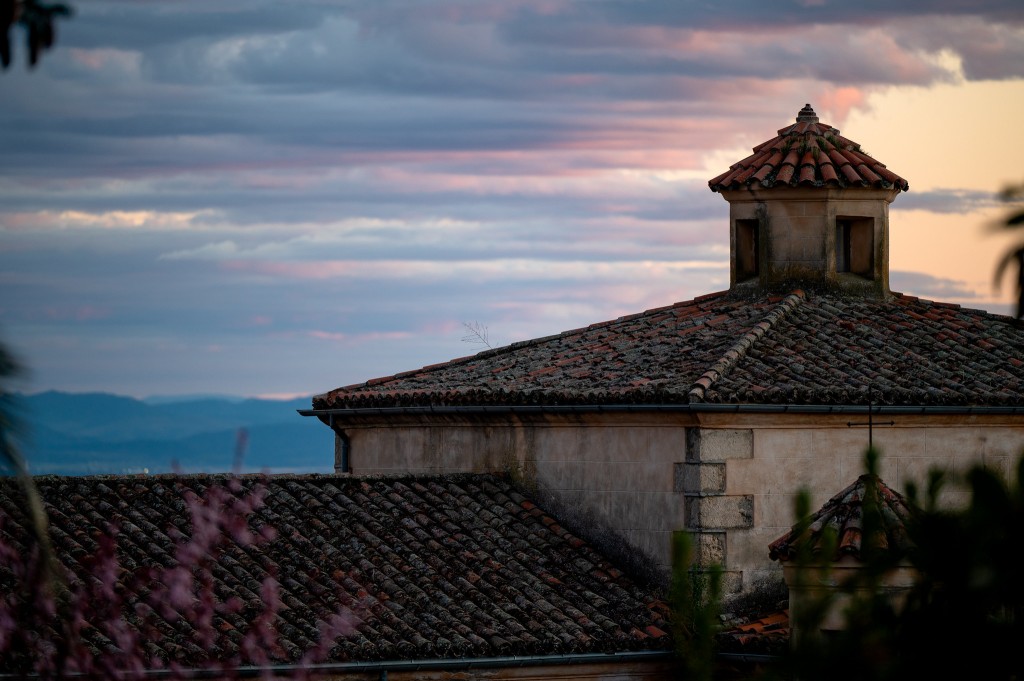
Full Day 6 review is here: https://wordpress.com/post/dhillphotography.wordpress.com/588
Hostal Casa Felipe https://www.hostalrestaurantecasafelipe.es/es/
Route from Ávila to Talavera de La Reina https://goo.gl/maps/B79Kikfjzr9LNxBp6
Route from Talavera de La Reina to Jarandilla de La Vera https://goo.gl/maps/nPQKPibmCN21Rcd98
Casco Viejo https://cascoviejobk.es/
Parador de Jarandilla de la Vera https://www.parador.es/es/paradores/parador-de-jarandilla-de-la-vera
Reataurante Al Norte https://www.facebook.com/people/Al-Norte/100038356406804/
Day 7



I started with a nice breakfast at a local spot, then walked around Jarandilla de la Vera for a while longer. I then drove some scenic roads to Plasencia, where I walked the streets and visited Plaza Mayor before having lunch at El Rinconcito. After lunch I explored more of the city, including the ancient city walls, and stopped to buy some olive oil at Vega Selección. I then continued on to Trujillo, along the way I stopped at Parque Nacional de Monfragüe where I was able to photograph griffon vultures, and enjoy some amazing scenery. In Trujillo I would be staying at Eurostars Palacio Santa Marta, which is a nice hotel overlooking the town. I had great views of Iglesia de San Martín from my room. I explored for a while before heading to Meseguera, on Plaza Mayor, for yet another great meal.



Full Day 7 review is here: https://wordpress.com/post/dhillphotography.wordpress.com/686
El Café de Lino no website, Avenida Doña Soledad Vega Ortiz 76
Route from Jarandilla de La Vera to Plasencia https://goo.gl/maps/NRy7xjSJUy7gXiB1A
El Rinconcito https://www.hotelrincon.com/restaurante-plasencia/
Vega Selección https://vegaseleccion.com/
Route from Plasencia to Trujillo https://goo.gl/maps/qfidGszKiaF7cX9D7
Parque Nacional de Monfragüe https://www.miteco.gob.es/es/red-parques-nacionales/nuestros-parques/monfrague/
Eurostars Palacio Santa Marta https://www.eurostarshotels.com/eurostars-palacio-santa-marta.html
Meseguera https://meseguera.com/
Day 8



Today would be devoted to exploring Trujillo. After breakfast I began with some local history at Casa Museo Pizarro and Museo de Coria; both dedicated to the conquistadors from Extremadura, the former being housed in the family home of Francisco Pizarro, and the latter featuring more art. I spent a lot of time wandering the streets of Trujillo, and taking photographs, as well as a doing little shopping, including some wonderful embroidered goods at Artesanía Bordado con Fieltro.
For lunch, I found Hostal Cuzco, off the beaten path, and ordered from their menú del día. The food was good, and I enjoyed the atmosphere. After lunch, I took a short rest, then went out to get early evening and night photographs. Dinner that night was at Alberca Asador, a Michelin rated restaurant, and the food and service were top notch; one of the best meals I’ve ever had.

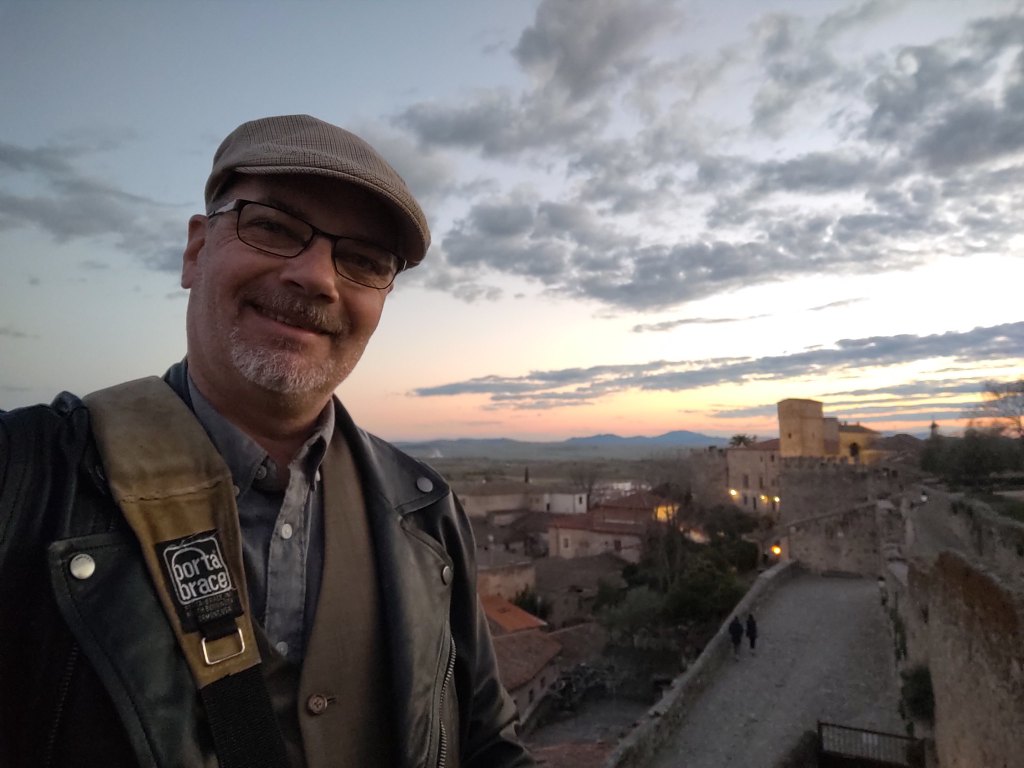

Full Day 8 review is here: https://wordpress.com/post/dhillphotography.wordpress.com/812
Casa Museo Pizarro https://www.turismoextremadura.com/en/explora/Casa-Museo-de-Pizarro/
Museo de Coria https://www.turismoextremadura.com/en/explora/Museo-de-la-Coria-00001/
Artesanía Bordado con Fieltro https://www.artesaniabordadoconfieltro.com/
Hostal Cuzco no website, Plaza de San Miguel, 19
Alberca Asador https://www.restaurantealberca.com/
Day 9



I spent a little more time wandering around Trujillo, including the castle which sits even higher on the hill than my hotel, before getting back on the road towards Cáceres. It was an uneventful ride, with just one stop, and soon I was at Hotel Soho Boutique Casa Don Fernando, right on Plaza Mayor. The room was large and comfortable, with two small balconies that looked out onto the plaza.
I walked around the hilly city for a bit, then enjoyed a great lunch at the very busy, and very lively Restaurante La Cacharrería. I continued my wanderings in Cáceres, including to a viewpoint on a hill beyond the city, and to Casa Museo Árabe,a museum of Arab culture, which I found to be very interesting.
I did spend a lot of time taking photographs in the city; the narrow, winding streets were so full of opportunities that it was hard to stop. Dinner on this night was at Restaurante Tapería 8º Arte, a casual place with some really excellent food and beer.

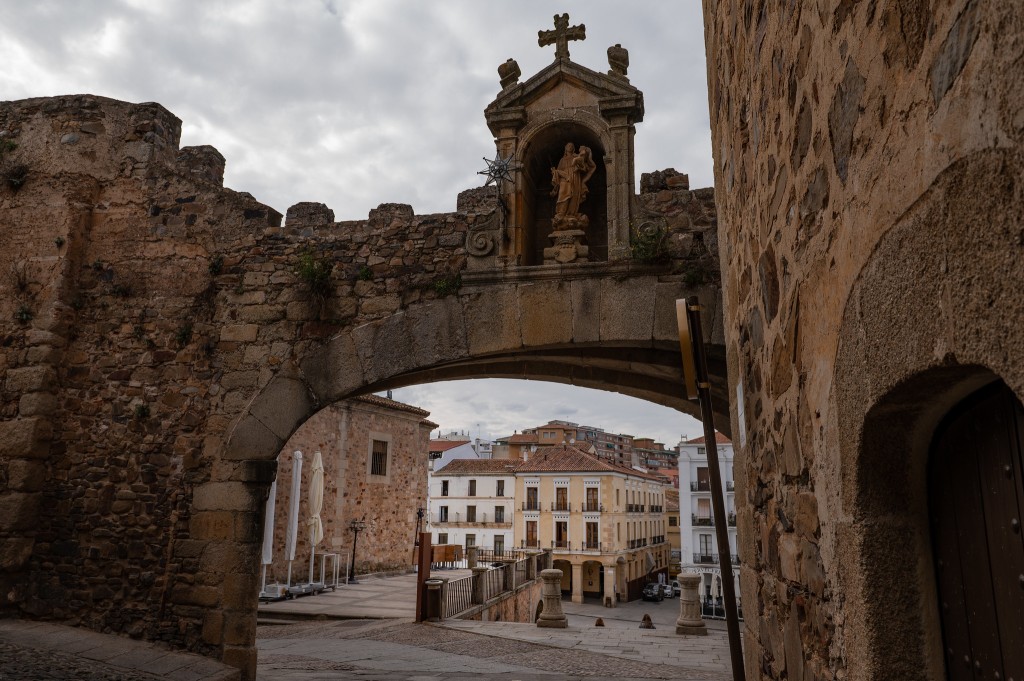
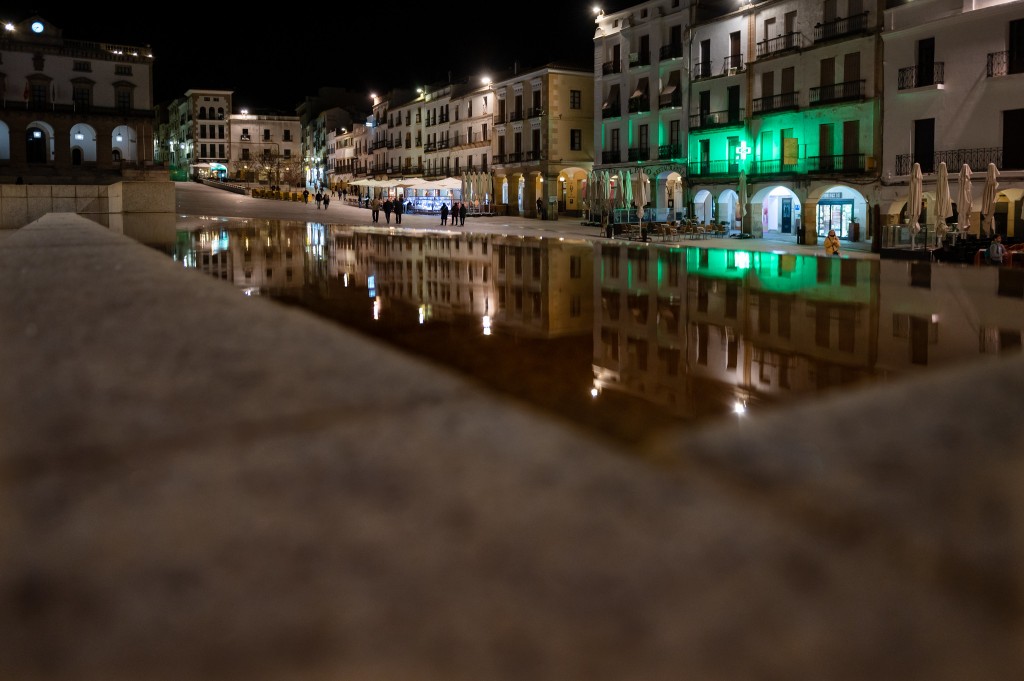
Full Day 9 review is here: https://wordpress.com/post/dhillphotography.wordpress.com/886
Alcazaba de Trujillo https://trujilloturismo.org/planea-tu-visita/alcazaba-de-trujillo
Route from Trujillo to Cáceres https://goo.gl/maps/HJdooxkWTKpHfd5U9
Soho Boutique Casa Don Fernando https://www.sohohoteles.com/destinos/hotel-soho-boutique-casa-don-fernando-3/
Restaurante La Cacharrería https://consolepsp.com/la-cacharreria
Casa Museo Árabe https://casamuseoarabe.com/
Restaurante Tapería 8º Arte https://www.restaurante8arte.es/
Day 10



I began this day with my usual breakfast, this time at Mayor 33, right outside my hotel. I then wandered the streets for a bit before visiting Museo de Cáceres, I wonderful museum featuring artifacts dating from the stone age to Roman times, in addition to a gallery of fine art. I followed that up with a good lunch at Restaurante Cácers, also on Plaza Mayor before beginning the drive to Badajoz.
I stopped a couple times along the route to take photographs before arriving mid afternoon and checking into my AirBnb. The host was very friendly, and I´d run into them later that evening. I spent a lot of time around Plaza Alta, then got a brief historical tour from my host, before having dinner at La Casona Alta, which was very filling and satisfying.


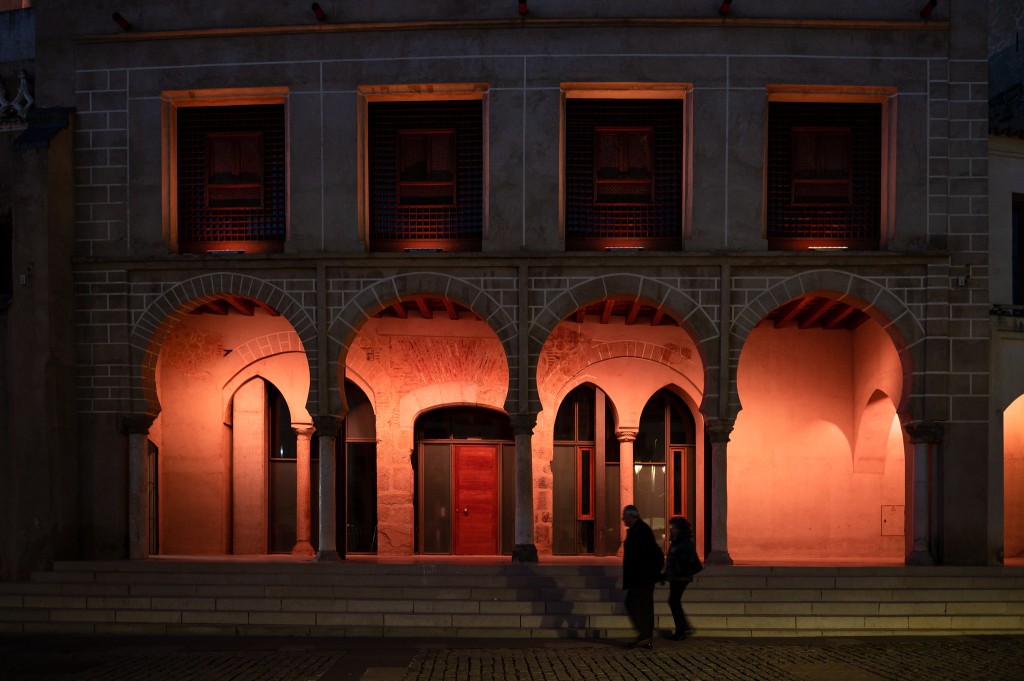
Full Day 10 review is here: https://wordpress.com/post/dhillphotography.wordpress.com/977
Mayor 33 no website Plaza Mayor 33
Museo de Cáceres http://museodecaceres.juntaex.es/web/view/portal/index/index.php
Restaurante Cáceres no website Plaza Mayor 31
Route from Cáceres to Badajoz https://goo.gl/maps/YRHSaEnquD2XxeEc9
La Casona Alta https://lacasonaalta.weebly.com/
Day 11



I started my day in Badajoz with breakfast at Cervecería Pepe Jerez in Plaza de España, then began exploring the city. I ended up at Museo de Bellas Artes which had a wide variety of art, and entrance was free, I then made my way back to the north end of the city where I walked the walls of the Alcazaba. There are some great views of the city from here, in addition to the historical significance of the fortress.
After completing the trip around the walls, I followed the street down to Río Guadiana and the Puente de Palmas. Lunch was at El Chirringuito del Parro, where I had a couple of beers, some tapas, and a wonderful dessert. After a busy morning and early afternoon, I went back to my AirBnb for a rest before heading out once again.
My second visit of the day to a museum was to Museo Extremeño e Iberoamericano de Arte Contemporáneo where the had a couple of amazing temporary exhibits. I then spent the rest of the evening wandering around before having dinner at Mesón El Nuevo Boche on Zubaron. The day concluded with some night photographs on my way back to my lodgings.



Full Day 11 review is here: https://wordpress.com/post/dhillphotography.wordpress.com/1047
Cervecería Pepe Jerez https://consolepsp.com/cerveceria-pepe-jerez
Museo de Bellas Artes http://muba.badajoz.es/
El Chirringuito del Parro no website Plaza de Portugal 6
Museo Extremeño e Iberoamericano de Arte Contemporáneo http://www.meiac.es/
Mesón El Nuevo Boche https://m.facebook.com/people/Meson-El-nuevo-Boche/100076507291409/#=
Day 12



This day I took a drive into Portugal to the town of Elvas. I parked near its castle, and started my explorations there. It was an interesting look into the defenses on the Portugal and Spain borders. In addition to the castle, there are two large forts on hills outside the town. After the castle I headed to Praça da República, which is a beautiful plaza in the center of Elvas. I had a small lunch here, at O Grémio, before I continued my adventure.
I walked many of the hilly streets, and climbed the wall near the beautiful Ermita de Elvas. The views here were amazing, and I took a number of photos from this vantage point before descending back into town. Once I was back below, I did a little shopping along a pedestrianized street, then made my way back up to the castle and my car. On the way back to Spain, I stopped on the outskirts of Elvas to view the large aqueduct there.
I drove back to Badajoz where I took a short rest, then went back out into the city. I had another great meal, this time at the excellent Gastrobar El Tronco, which is not far from Plaza de España.

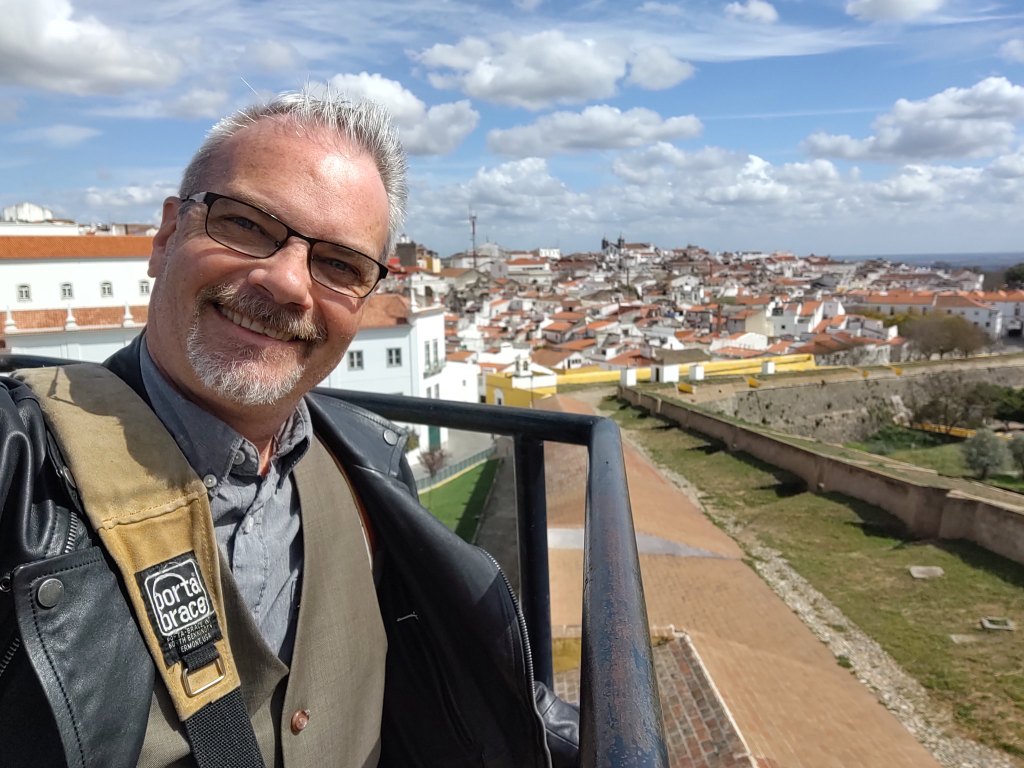

Full Day 12 review is here: https://wordpress.com/post/dhillphotography.wordpress.com/1123
Route from Badajoz to Elvas https://goo.gl/maps/hDwHwD4d2ugj2Y58A
Castelo de Elvas https://www.cm-elvas.pt/descobrir/patrimonio/militar/castelo/
Restaurante O Grémio no website, Praça da República
Aqueduto da Amoreira https://www.cm-elvas.pt/descobrir/patrimonio/civil/aqueduto-da-amoreira/
Gastrobar El Tronco https://www.facebook.com/ElTroncoGastroBarFusion
Day 13



After getting my things together to prepare for the next leg of my trip, I went out to get breakfast. I ended up at Casa Rosendo, where I sat at one of their outdoor tables. Thankfully it was under an awning, since it had begun to rain during the overnight hours. I did one last walk around the area, then packed up the car and headed off towards Mérida.
Along the way, I stopped off in the small town of Montijo, had coffee at Méson Las 3 Estrellas, a little local place filled with regulars, then took a few photos around the main square before continuing on.
About half an hour later I arrived at my hotel in Mérida, Hotel Ilunion Mérida Palace. It’s a beautiful property, right on Plaza de España, and my room was amazing; very large, with a view of the plaza from my window.
After settling in, I crossed the square to El Callejón to have lunch. I ordered from their menú del día, which as always, was a good value; even though the food wasn’t quite as good as I’d come to expect. After lunch, I wandered the city for a while before walking to the Puente Romano, a bridge built in the first century, to take photos. I waited here until sunset, and ended up with some incredible photos.
For dinner, I had chosen another place on Plaza de España, Mesón El Pastorejo, which was, by far, the busiest place I’d been in on the trip. The food was really good, and I enjoyed the bustling atmosphere. My little table gave me a really good seat to watch all the activity.

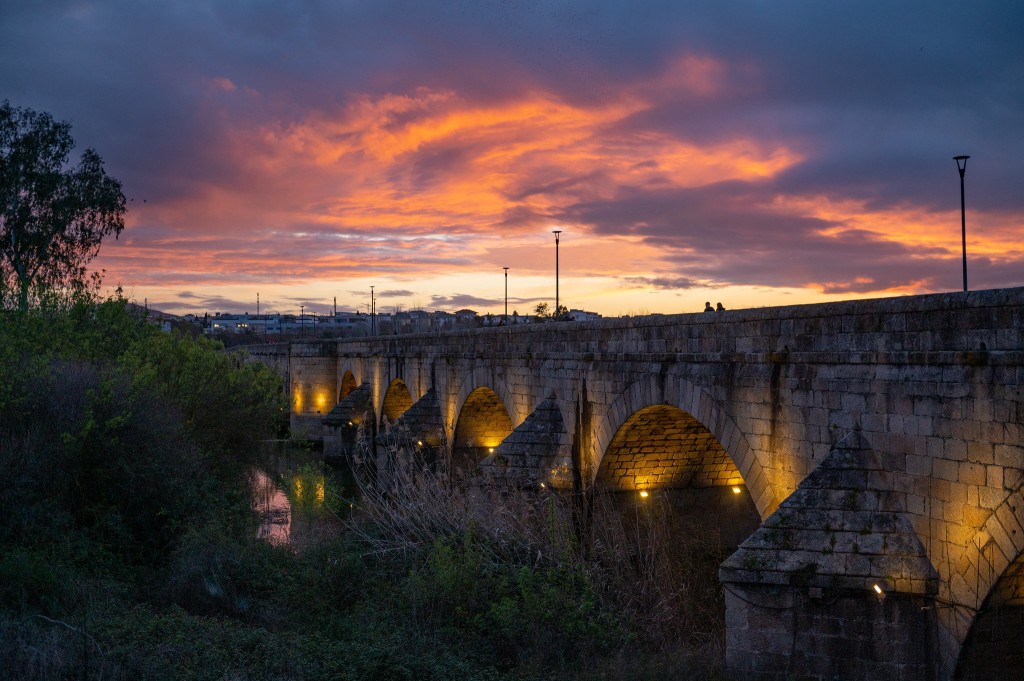

Full Day 13 review is here: https://wordpress.com/post/dhillphotography.wordpress.com/1220
Casa Rosendo https://casa-rosendo-bar-restaurante.negocio.site/
Route from Badajoz to Mérida: https://goo.gl/maps/TXrY1jmVhYsR1Fxh6
Méson Las 3 Estrellas https://www.facebook.com/profile.php?id=100057394640823
Hotel Ilunion Mérida Palace https://www.ilunionmeridapalace.com/
El Callejón https://www.facebook.com/calljondelaplaza/
Puente Romano https://turismomerida.org/what-to-see/roman-bridge/
Mesón El Pastorejo https://www.facebook.com/mesonpestorejo/
Day 14
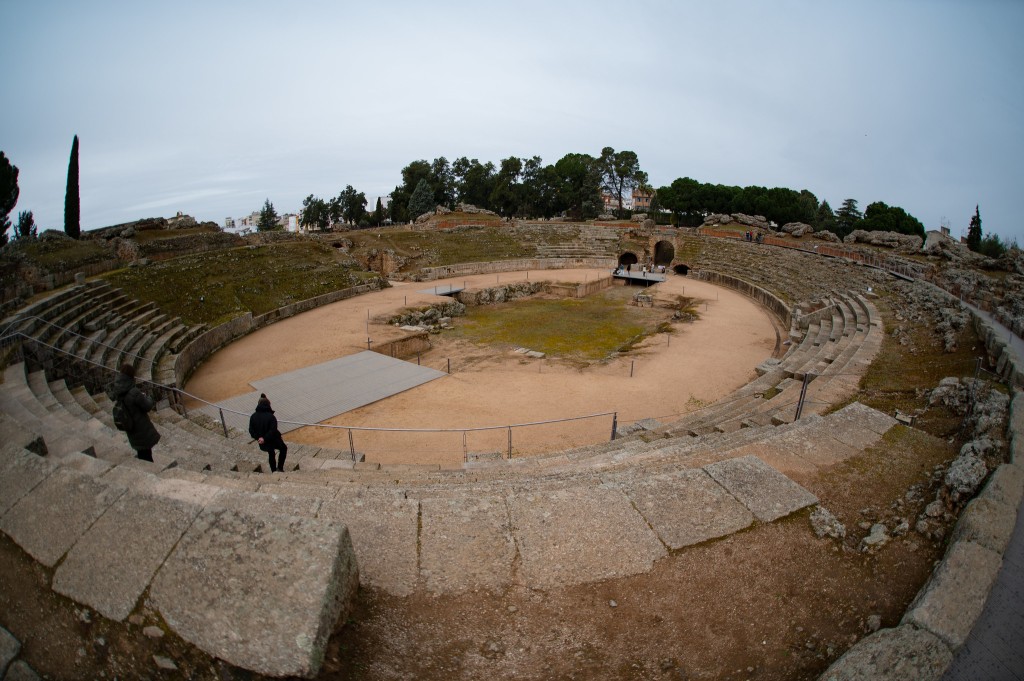

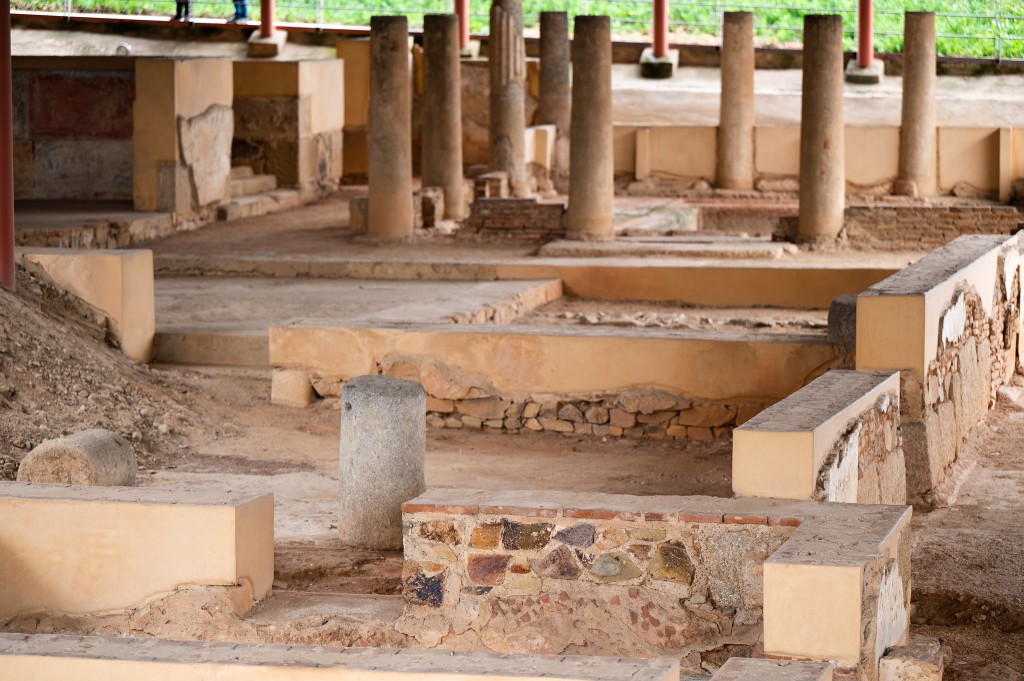
The day started off cloudy, with some light rain, which would continue on and off for the duration. I began with a café con leche and tostada con tomate at La Catedral, a café on Plaza de España before beginning activities for the day. My first destination were two Roman sites that sit next to each other; the Anfiteatro and Teatro Romano. I purchased the Combinado ticket, which allows access to both places, as well as a number of other sites throughout the city; it’s a good bargain. I began at the amphitheater which was quite interesting. The majority of it is still intact, but there are places that have deteriorated significantly over the centuries. After exploring for around an hour or so, I walked through an archway to the theater. In all honesty, the theater is a marvel not to be missed. The giant columns that grace the stage are enormous, with intricate details. it was fun to walk in the backstage area, as well as climb to the top of the seats to view it all from high above.
Once I left there, I walked to the southern section of the city, past the Plaza de Toros to Casa del Mitreo, and excavated home also from the Roman era. This is another of the places that was included in the ticket that I had purchased. To see how well some of the things here, like mosaic floors, had been preserved was amazing. I really enjoyed learning about the reasons the house was laid out the way that it was.
After finishing my visit there, I began walking back in the direction of my hotel, and stopped for lunch at Bar Salas. The restaurant is a neighborhood type place, right on Plaza Santo Domingo. I sat outside, and enjoyed some people watching, as well as some great food.
After lunch I did a little shopping, specifically for some clothing, and after a successful stop on Calle Santa Eulalia, I went back to the hotel for a short rest.
When I went back out, the final thing on my list of things to do for the day was to visit the Alcazaba, also included in the pass that I had bought at the Anfiteatro. The fortress is immense, and I spent a couple of hours exploring every bit of it; from the top of the walls, to the underground aljibe, the cistern. I loved being able to see the construction techniques and history, as well as some of the displays that were laid out in different parts of the compound. I took a few more photos on the way back to the hotel for another rest before dinner.
When I went back out, the skies had opened up and the rain was steady. Luckily, my chosen restaurant was only a short walk, and I was was still fairly dry when I reached Méson El Lebrel, on Calle John Lennon. This was a small, family run restaurant, and it felt very homey. It was quiet, and I had a table near the window. I asked for a vermut while I decided what to have, and when the woman running the place returned I asked for the conejo, rabbit, which I had never had before. I enjoyed the meal, then had a coffee before leaving.
The steady rain from earlier had turned into a downpour, so I quickly made my way back to the hotel, packed my things, and went to bed in preparation for an extended drive the next day.
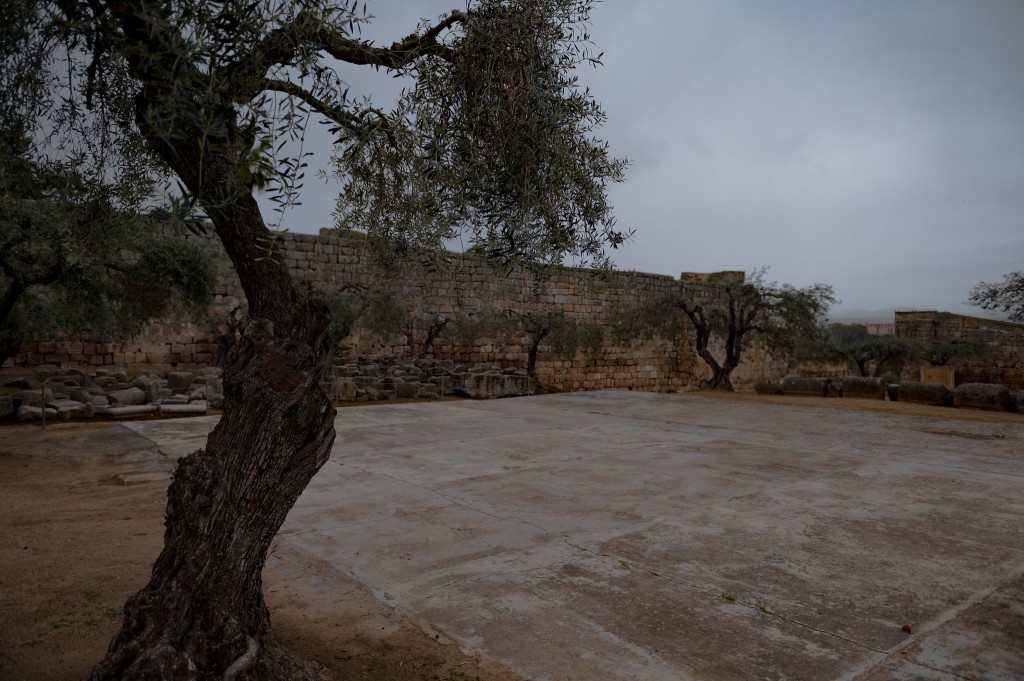


Full Day 14 review is here: https://wordpress.com/post/dhillphotography.wordpress.com/1300
La Catedral https://la-catedral-restaurante-cafe.negocio.site/
Anfiteatro/Teatro Romano/Casa del Mitreo/Alcazaba https://www.consorciomerida.org/conjunto/monumentos/anfiteatro
Bar Salas no website Plaza de Santo Domingo
Méson El Lebrel https://meson-el-lebrel-cocina-tradicional-extremena.negocio.site/
Day 15



When I got up, the rain had passed, and it was a beautiful day. I walked around the city for a while before getting my car and beginning the drive north to Guadalupe, which would be my last destination in Extremadura. I stopped along the road a few times to take photos, capturing a couple of epic shots. When I arrived in Guadalupe, the main plaza was packed with tourists, so I wandered the quieter streets, taking photos, and enjoying the sunshine. I had a late breakfast at a small restaurant called Café Bar La Morenita. I was the only customer, since it was at an odd time, and a bit off the beaten track. After I ate, I continued exploring, and did a little shopping at a local artisan called Artesanía en Cobre y Latón Hijo de Juan Tena Poderoso that specialized in copper goods. I stayed in town for another half hour or so before moving on towards Ciudad Real in Castilla La Mancha.
I again made a number of stops to take photos along the way, including the surprise of a couple of horses in a field near a bridge that I had stopped at. When I arrived in Ciudad Real, I missed a turn, but was able to correct the mistake fairly quickly, and got to the parking garage that was just a short walk to my hotel. In Ciudad Real I’d be staying at the Hotel Silken Alfonso X, a nice hotel just off of Plaza Mayor. I had splurged for the Junior Suite here, and it was a very nice room that included a terrace.
After settling in, I went out to hang out in Plaza Mayor for a while, taking photos, and people watching. Eventually, it was late enough to head to dinner, and I had chosen Ficcus, after discovering that my original choice was closed for the evening.
I had a couple of vermut while waiting for the kitchen to open. Ficcus is a fairly upscale place, with excellent food, and one of the most decadent desserts that I’d had on the trip. Completely full, I walked back to the hotel, looking forward to a good night’s rest.



Full Day 15 review is here: https://wordpress.com/post/dhillphotography.wordpress.com/1399
Route from Mérida to Guadalupe: https://goo.gl/maps/ogBKbq4NKAvMKubu7
Café Bar La Moranita https://m.facebook.com/people/Caf%C3%A9-bar-La-Morenita-hogar-del-pensionista/100063681693523/
Artesanía en Cobre y Latón Hijo de Juan Tena Poderoso https://www.extremadura.com/paginas/artesania-juan-poderoso
Route from Guadalupe to Ciudad Real: https://goo.gl/maps/hDL3fjaPLPNqaLHw5
Hotel Silken Alfonso X https://www.hoteles-silken.com/en/hotel-alfonso-x-ciudad-real/
Ficcus https://ficcus.es/
Day 16



My full day in Ciudad Real started with heavy downpours, but I was prepared with a raincoat, and waterproof covers for my camera and gear bag, so I set out into the storm. My first stop was breakfast on Plaza Mayor at El Portalón. It was a cozy place, and a good place to sit and watch the world go by. When I ventured back out, I headed to the Museo de Quijote, which as the name suggests, is dedicated to the famous literary character. It is a small museum, but I truly enjoyed myself, and not only because it was out of the rain.
When I left, the downpours had tapered to a drizzle, which made for a pleasant walk through Parque Gasset, which is just behind the museum. After wandering from end to end, I walked some of the streets aimlessly, then tried to do some shopping, but didn’t find anything I really liked. I was getting hungry, so I began looking for a spot for lunch, in Spain there are so many choices in most places that I’ve visited, that it can be a real task to decide. I chose Café El Quijote, and settled into a small table in the restaurant, that seemed to be frequented by a lot of locals. The food was, again, really good, and I finished my meal with a café before going back to the hotel for a quick nap.
When I got up, it was evening, and the rain had completely moved out. I walked the streets, taking photographs and enjoying the crowded plazas. At dinner time, I ended up at Bodegas Galiana where I had an incredible sample of Spanish meats and cheese, and delicious tirimisú. When I had finished, I went back to the hotel to pack in preparation for leaving the city in the morning.



Full Day 16 review is here: https://wordpress.com/post/dhillphotography.wordpress.com/1490
El Portalón https://playapark.com/el_portalon/index.html
Museo del Quijote https://www.ciudadreal.es/servicios-municipales/cultura/museos/museo-del-quijote.html
Café El Quijote no website Calle de la Paloma, 2
Bodegas Galiana https://restaurante-bodegas-galiana.business.site/
Day 17


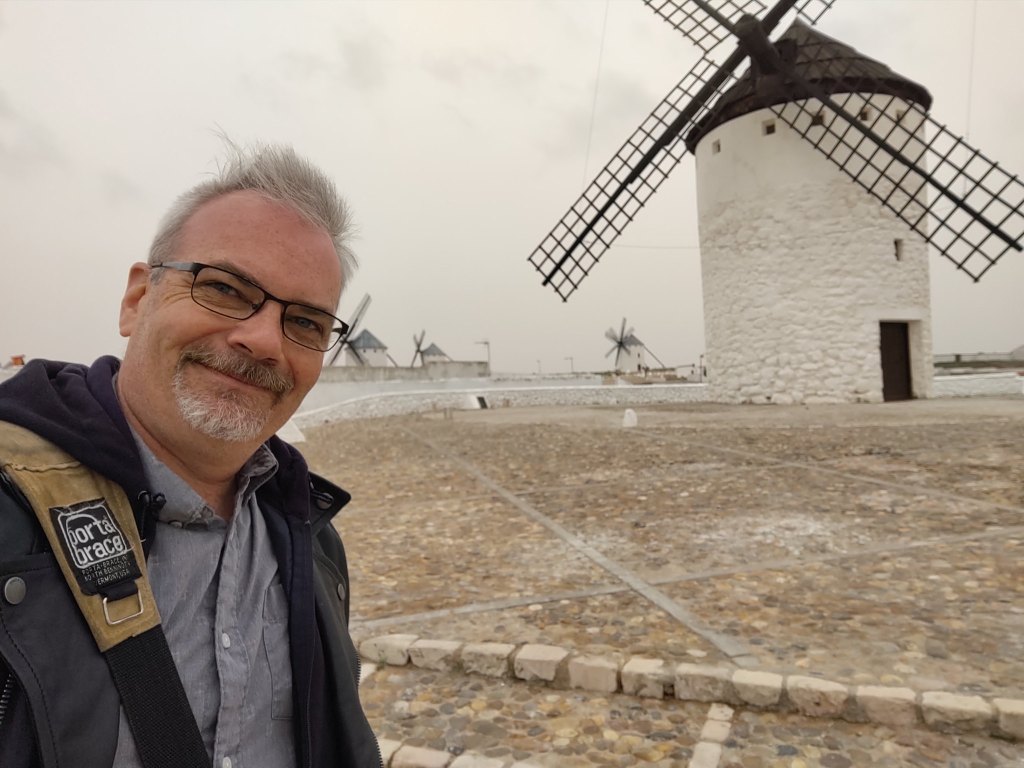
I started the day early, with breakfast at El Ventero, having my usual at this classic bar, before beginning the drive through Castilla La Mancha that would eventually end in Toledo.
My first stop was just a quick one, in Puerto Lápice, to take some photos of their three windmills that sit on the hill overlooking the town. I pulled over a couple more times to get photos of windmills in other towns before I reached my first true destination of the day, Campo de Criptana.
This town also sits on a hill, and at the top are ten windmills. The tourist information center is in one of them, and I began there. I then walked around taking quite a few photos of the windmills, the town, and the streets. The effects of a weather phenomenon known as La Calima were starting to become apparent. It’s caused by dust from sandstorms in the Sahara being brought by prevailing winds to the north, and basically looks like an orange fog. For lunch, I went to one of the places that are actually built into the side of the hill, Cueva La Martina. I had a good meal in the subterranean restaurant, where I ordered from the menú del día, which they were still creating when I sat down.
After lunch, I spent a little more time here before making my way to Almonacid de Toledo, a tiny town with a ruined castle overlooking it. I drove up a very narrow and winding dirt road to the castle, then explored the ruins for about an hour before starting the least leg of today’s drive to Toledo.
When I reached the city of three cultures, the orange haze was even more noticeable. I stopped outside of the city to take a few overview pictures, before driving to the parking garage, and making a short walk to the hotel, Hotel Domus Plaza Zocodover, my second Eurostar property of the trip. It was more basic than the other places that I had stayed, but it was still comfortable, and close to everything.
I took a short nap, then got cleaned up and went out wandering. Toledo is a great place just to walk with no agenda. There are surprises around every corner, and every street in unique. For dinner I had chosen Cervecería Artesana Abadía, my second restaurant of the day that had below ground seating. The meal was excellent, and it was topped off with an amazing dessert.
I ended the day with a few more photos before going back to the hotel for a well deserved night’s sleep.



Full Day 17 review is here: https://wordpress.com/post/dhillphotography.wordpress.com/1544
El Ventero https://www.facebook.com/mensonelventero/
Route from Ciudad Real to Campo de Criptana: https://goo.gl/maps/t6vwvHxH4pBhvjaN6
Molinos de Viento de Campo de Criptana http://www.turismocastillalamancha.es/patrimonio/campo-de-criptana—molinos-23064/descripcion/
Cueva La Martina http://cuevalamartina.com/en/
Route from Campo de Criptana to Toledo https://goo.gl/maps/t6vwvHxH4pBhvjaN6
Hotel Domus Plaza Zocodover https://www.eurostarshotels.com/domus-plaza-zocodover.html
Cervecería Artesana Abadía https://abadiatoledo.com/en/abadia-english/
Day 18



I would have a full day to explore Toledo, and while I had created a map of places that I wanted to visit, the timing was fairly flexible. I didn’t plan to enter the major sites like the Catedral or Alcázar; I have done that on previous trips, and this time I just wanted to revel in being in this wonderful city. I started with breakfast at La Cuesta, a neighborhood bar not far from my hotel. The day was overcast, with La Calima still very evident, but I’d visited Toledo in the rain before, and still enjoyed myself. I began my long day of walking on the north side of the city, visiting some of the medieval gates, and taking a lot of photographs, then headed into the heart of the city.
I love the streets here, and I stopped many times to take photographs. I stopped for a while in Plaza del Ayuntamiento, and photographed the details of the famous cathedral as well as city hall. After some more wandering, I did a little shopping. I purchased a few souvenirs, new kitchen knives made of Toledo steel, some damasquinado, and some leather goods. I continued around the perimeter of the city, from Puente de San Martín, then down along the river before climbing back up to the walled area near Puerta del Cambrón. The weather had taken a turn for the worse, and I was happy that I´d soon be indoors.
I stopped for lunch at an old favorite of mine, Café del Kasco, where I was greeted warmly by the owner, then ordered a couple of different dishes, as well as a cerveza. I finished the meal with a great dessert made with mazapán, a sweet made using almonds and sugar.
I then headed back to the hotel, to drop of the things that I had bought, to clean the rain off of my jacket, which turned to mud because of La Calima, off of my jacket, and take a short rest. When I did get up, I walked to the other side of the city, where Puente de Alcantará crosses the Tajo, and walked quite a distance up the road to my favorite viewpoint of Toledo. I stayed here until the sky got dark, capturing photos of the city turning to gold as the street lights came on, then walked back into the city.
I stopped often to take more photos before arriving at Taberna Embrujo for dinner. I had a simple meal here, as well a a cerveza, both were very good, and I had a chance to chat with a lady from Valencia while I ate.
Toledo at night is a magical place, and I casually strolled the streets, now empty of the day trip tourists, taking photos of the timeless beauty of the city. I revisited a few places that I’d been on previous trips as well, capturing new photos to go along with daylight ones that I already had. Finally, it was time to call it a night, the end of the road trip would begin in the morning, and I wanted to be rested for the drive.



Full Day 18 review is here: https://wordpress.com/post/dhillphotography.wordpress.com/1651
La Cuesta https://www.restaurantelacuesta.com/
Two maps of my planned walk around Toledo: https://goo.gl/maps/MsFTbMBq5tDGSCjr9
https://goo.gl/maps/C6AaZgpqpUmAjXJi9
Café del Kasco https://www.facebook.com/profile.php?id=100061443865338
Santa Iglesia Catedral Primada de Toledo https://www.catedralprimada.es/
Alcázar de Toledo https://turismo.toledo.es/recursos/museos-y-monumentos/id611-museo-del-ejercito–alcazar-de-toledo.html
Taberna Embrujo https://www.tabernaembrujo.com/
Day 19



I began the last day of the road trip at Cafetería Wamba on Calle Comercio with my café con leche and tostada con tomate, then went straight to Confitería Santo Tomé to buy mazapán to bring home. I checked out of the hotel, collected my car, and started driving towards Madrid. Along the way I stopped to photograph on of the Toros de Osborne. These giant bulls were once advertisements for a brand of brandy, they are now an iconic symbol of Spain.
Once I was back in Madrid, I checked into Hotel Mediodía for the second time on this trip, then went out to enjoy the city, and do a little shopping. Near Plaza de Chueca is Mercado de San Antón, my favorite market in Madrid. I bought a couple of bottles of Verde Esmeralda olive oil, which I consider the best tasting that I’ve had, at Octavio, then went back to the plaza to get something to eat.
I sat at a table on the plaza, and had a plate of jamón and a cerveza from Chueking Tapas, and sat for a while enjoying the atmosphere of the vibrant square. When I was done, I walked up Gran Vía to find the place that I´d need to go in the morning to get a COVID test. Along the way, I spotted a number of theaters having performances of popular musicals, including El Rey León, The Lion King, at Teatro Lope de Vega. I decided that it sounded like fun, so I went online and bought one of the few remaining tickets. A few hours later, I was seated in the balcony watching this incredibly well produced show, then went back to get some sleep before my last full day in Spain.



Full Day 19 review is here: https://wordpress.com/post/dhillphotography.wordpress.com/1781
Cafetería Wamba no website, Calle Comercio, 2
Confitería Santo Tomé https://mazapan.com/
Route from Toledo to Madrid https://goo.gl/maps/oCjYLoiVuEcBuuuT8
Hotel Mediodía https://www.mediodiahotel.com/es/
Mercado de San Antón https://www.mercadosananton.com/
Octavio https://lacharcuteriadeoctavio.com/nuestras-tiendas/
Chueking https://www.grupoelrincon.es/restaurantes/chuecking-tapas-bar
Teatro Lope de Vega https://www.stage.es/
Day 20



The first order of business for the day was to get my COVID test, which at the time was rrequired to transit through Portugal. The process at Democratest, on Gran Vía, was quick and efficient, and I was done in fewer than five minutes. after the test, I walked to Plaza de España to visit the monumnet to Miguel Cervantes ans his famous characters Don Quijote and Sancho Panza. I followed that by taking the Metro to El Retiro, where I took some photos of Puerta de Alcalá before walking through the park to have one more breakfast at Plenti.
I returned briefly to the hotel to organize a few things for packing, then walked to Puerta del Sol, which is considered the center of the city. At Real Academia de Bellas Artes de San Fernando, which was just a few meters from this main plaza, was a temporary exhibit of some Picasso works. I had time before lunch, so I took about an hour to view it, seeing some of his lesser known works was exciting.
After enjoying the art, it was time for lunch at the rooftop restaurant Azotea del C’irculo. This was definitely a fun experience. The food was really top notch, and the dessert was a treat, but the views were amazing. After eating I lingered for another half hour or so, taking it all in, and of course, capturing quite a few photos.
Back at street level, I went towards Puerta del Sol, and did some browsing at the large department store El Corte Inglés, which has been a tradition of mine since the first time I visited this city more than thirty years ago. When I finished there, I went back to the hotel to get changed in preparation for another musical.
When it was time, I walked up Calle de Atocha to the beautiful Teatro Calderón where I witnessed an incredible performance of A Chorus Line. When the show was over, I headed north in the city for dinner at La Fragua de Sebín, a wonderful restaurant about halfway between the Tribunal and Bilbao stops on line 1 of the Metro. The meal was excellent, and I loved the atmosphere of the restaurant; it was classy without being stuffy.

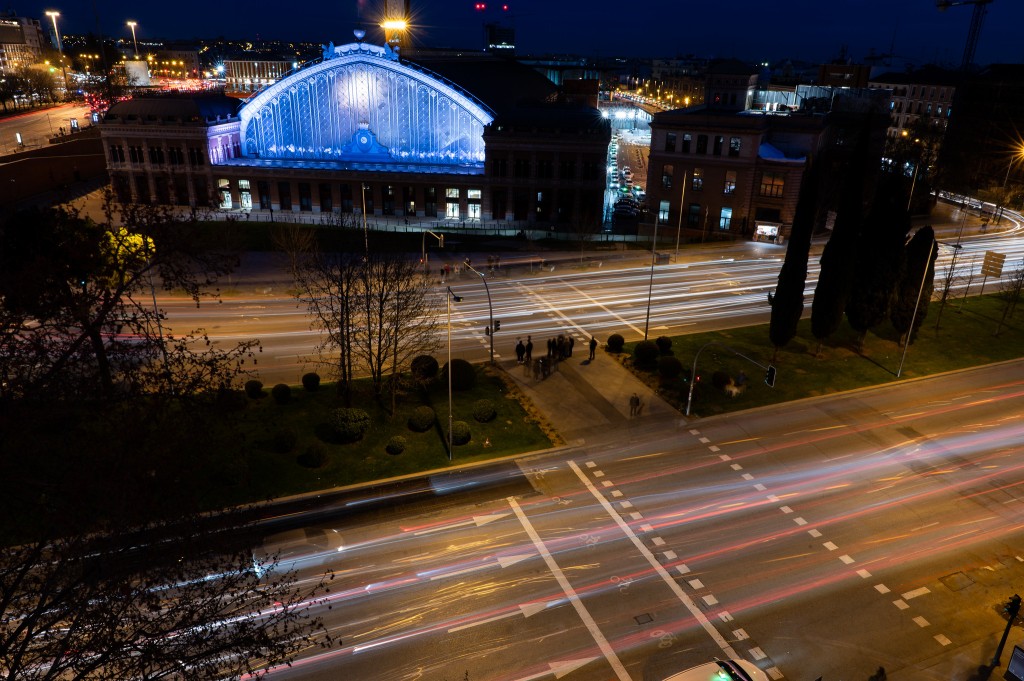
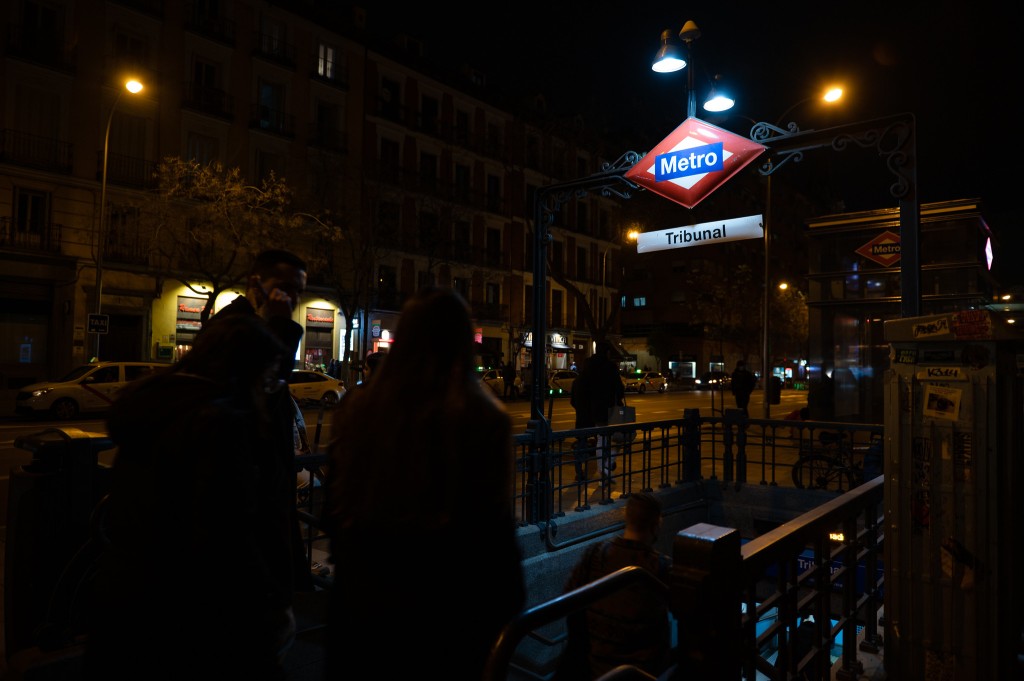
All that was left to do was to pack, and prepare for the trip home in the morning.
Full Day 20 review is here: https://wordpress.com/post/dhillphotography.wordpress.com/1828
Plenti https://www.plentimadrid.com/
Real Academia de Bellas Artes de San Fernando https://www.realacademiabellasartessanfernando.com/es
Azotea del Círculo https://www.azoteadelcirculo.com/
El Corte Inglés https://www.elcorteingles.es/centroscomerciales/en/eci/centros/centro-comercial-preciados-callao
Teatro Calderón https://tcalderon.com/
La Fragua de Sebín https://www.lafraguadesebin.com/
Final Thoughts
This trip, nearly a year in planning, was an adventure that I’ll never forget. The attention to detail eliminated almost all of the stress. I prefer to fly Iberia because of the availability of a direct flight from Boston, but if I find another good deal on TAP, I wouldn’t hesitate to fly with them again.
Researching restaurants helped to make sure that I had good, and even excellent meals wherever I was. It also was helpful to know that I wouldn’t have to go out of my way to get to where I was going to eat.
If I had another day, I would’ve added it to Cáceres. The other change I would have made, in hindsight, would be to remove one night from Ciudad Real, and spend it in Guadalupe.
I’m looking forward to my next trip to Spain, and even after all the times I’ve been to Madrid, there are still things that I have on my list of things to do.
A few tips for taking a trip to Spain.
Start planning early.
Learn a few words in Spanish. It’s not completely necessary, especially in larger cities, there will usually be someone on staff who speaks English well, but even the smallest amount of effort will be appreciated by the locals.
Spain’s electricity is 220v and uses a two prong round connection. Get a good voltage converter, and additional adapters. Most cell phone chargers and computer power supplies will work with just an adapter if the input voltage rating on it says 110v-220v, but I still like to have the extra protection of the converter.
Research the places you want to go, and the things you want to do.
For the popular places, book entrance to attractions ahead of time. This saves you time waiting in line to purchase tickets. This is especially true for places in larger cities.
When creating your itinerary, avoid the temptation to pack as much into a day as possible, The quiet times in between visiting places are often the most rewarding. I’ll usually plan one major thing, and one minor thing per day, which in addition to a slower pace, helps to keep you from being overwhelmed, which can lead to fatigue. It also lets you focus on fewer things, and appreciate the individual experiences, without them all getting jumbled together.
Purchase and bring a portable luggage scale. This will ensure you aren’t surprised by an overweight bag at the airport. When packing for the trip, be sure to leave some space for some of the wonderful things that you buy while in Spain.
If you have difficulty using your credit card to purchase tickets from home, check to see if the option to use PayPal is available. That will often solve the issue.
When buying something with a card, you will be presented with the option to pay in Euros or Dollars. Always choose Euros.
I recommend having about 100€ in cash for every week that you plan to be there. Some places don’t accept cash, and smaller transactions, like a coffee or bottle of water, are just easier with paper money or coins. It could also help you out of a jam if there is a computer issue, like when my cards were declined when I was trying to buy fuel in Ávila.
In Madrid, the Tarjeta Multi is a great value for traveling by bus or Metro.
If you plan to rent a car, book it early on in your planning. If you are from outside of the EU, check to see if you need an International Driving Permit, which are available through AAA. Also, carefully plan where you will park. Four of my hotels had onsite parking, but two of those were difficult to access, and I ended up finding an easier option in a nearby garage.
Give yourself a quick tutorial on Spanish road signs, some of them don’t have a US equivalent, and could be confusing.
If you are going to be away from the car, don´t leave anything of value visible. Make sure your bags are safely stowed in the trunk. If I were making an extended stop in between places where I would be spending the night, the suitcases went into the rear of the car at the hotel that I was leaving, and I didn’t open the rear again until I got to the next hotel. For a potential thief, it’s a risk vs reward situation. If they can’t see something that could potentially be of value, they are less likely to take the chance of getting caught breaking in.
If the thought of driving in a foreign country gives you anxiety, don’t worry. Spanish cities are very well connected through high speed rail. The state run operator is Renfe. Their website can be a little tricky to navigate, but with patience, it’s pretty easy to book tickets. There are also intercity buses that can get you to all the cities served by rail, as well as many smaller places that aren’t.
Comfortable hotels are important. Beyond that, a central location is more important than the amenities that they offer. It´s no fun to have to travel a considerable distance every time you want to go from the hotel to the places of interest.
When checking in, have your passport ready. By law, hotels have to keep a photocopy of your identification.
Bring comfortable shoes. The best way to experience a place is by walking, and sore feet will take the joy out of your travels.
In Spain, dinner is much later than in the US. 20:30 is very early, and 22:00 is normal. Check to see if your chosen restaurants offer reservations, as the evening progresses, places will fill up fast.
Look online for menus from the restaurants you choose. Many have websites, but even those who don’t will often have them posted in their Google listing.
At lunch time, order from the menú del día. You’ll usually see it on a board outside the restaurant. This is an incredible value, and includes two courses, bread, a drink (usually water, beer, or wine), plus either coffee or dessert.
To find the best meals, at the best places, try to avoid eating in the most tourist-centric areas. For example, in Madrid, I’d advise against eating in Plaza Mayor, or right around Puerta del Sol.
Consider buying an International SIM card for your phone. My Verizon SIM will work in Europe, but the company charges $10 per day to use it. I saved considerable money by using one from a service provider based in Europe.
Stay safe. The biggest threat to tourists in Spain is pickpocketing. Be aware of your surroundings. If you are going to carry a bag, make sure it’s a cross body style. Don’t carry your phone in your back pocket, or leave it sitting on a table. Pickpockets are thieves of opportunity, the more you do to make it difficult for them, the less likely you are to be a victim.
Relax, enjoy your trip, try new foods, and look for shops with locally made goods. The artisans produce items which make much more memorable souvenirs than the standard trinkets.

